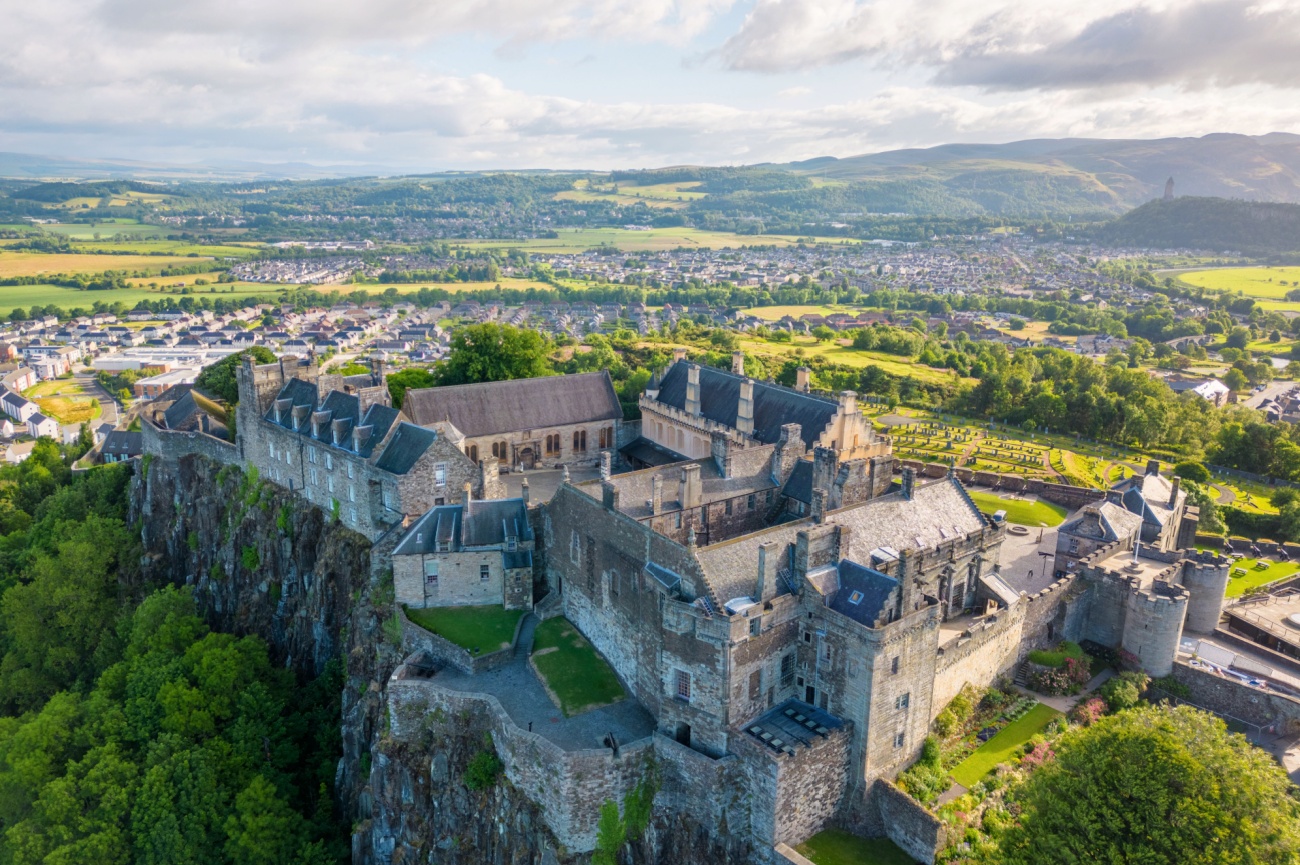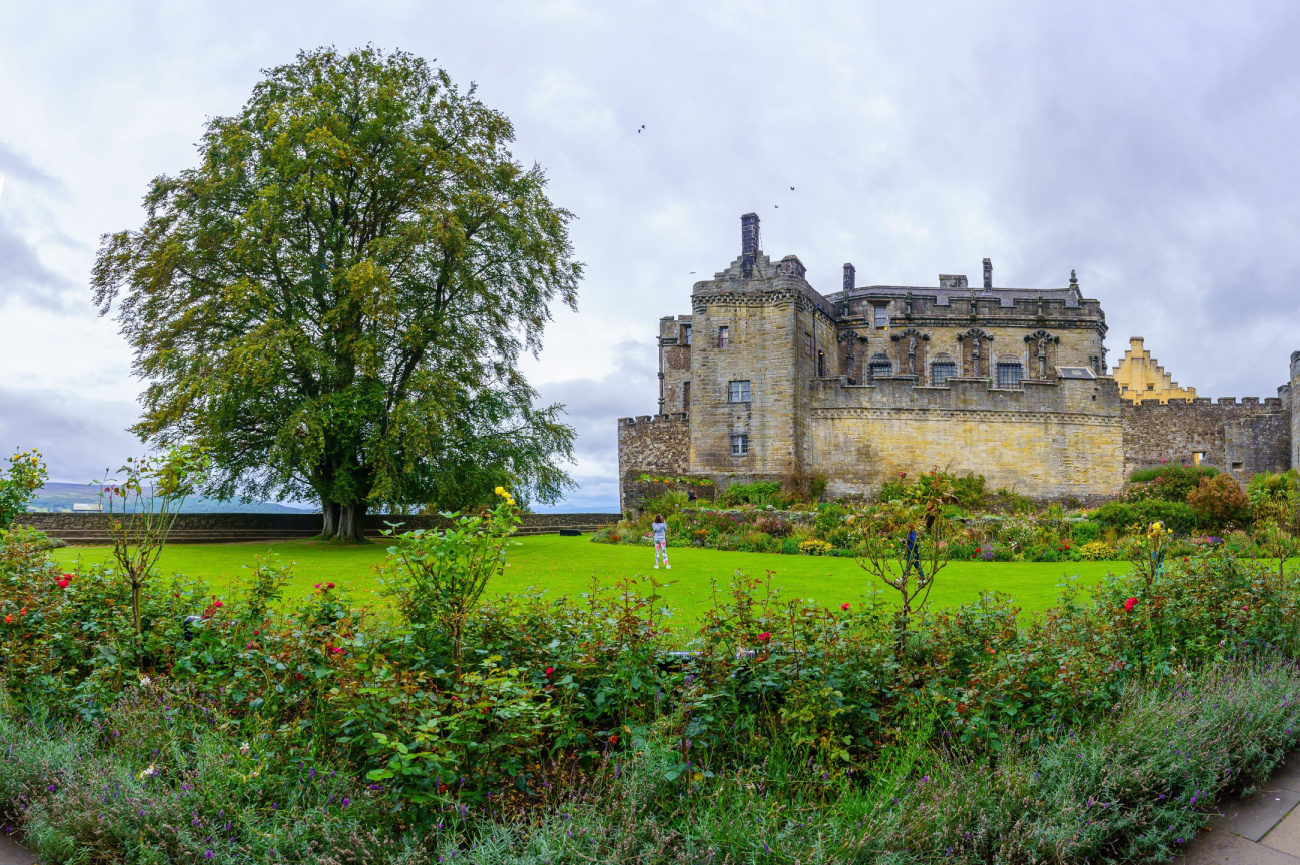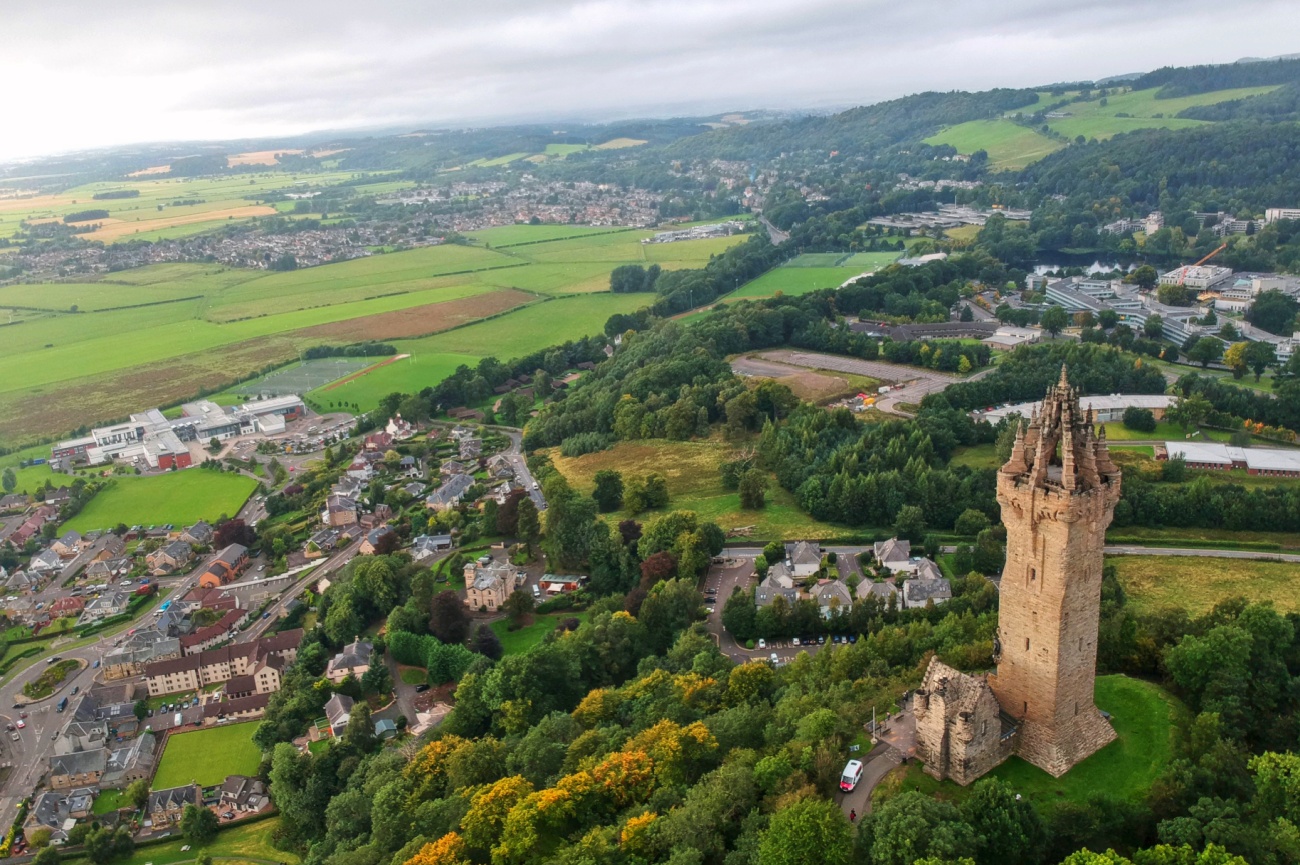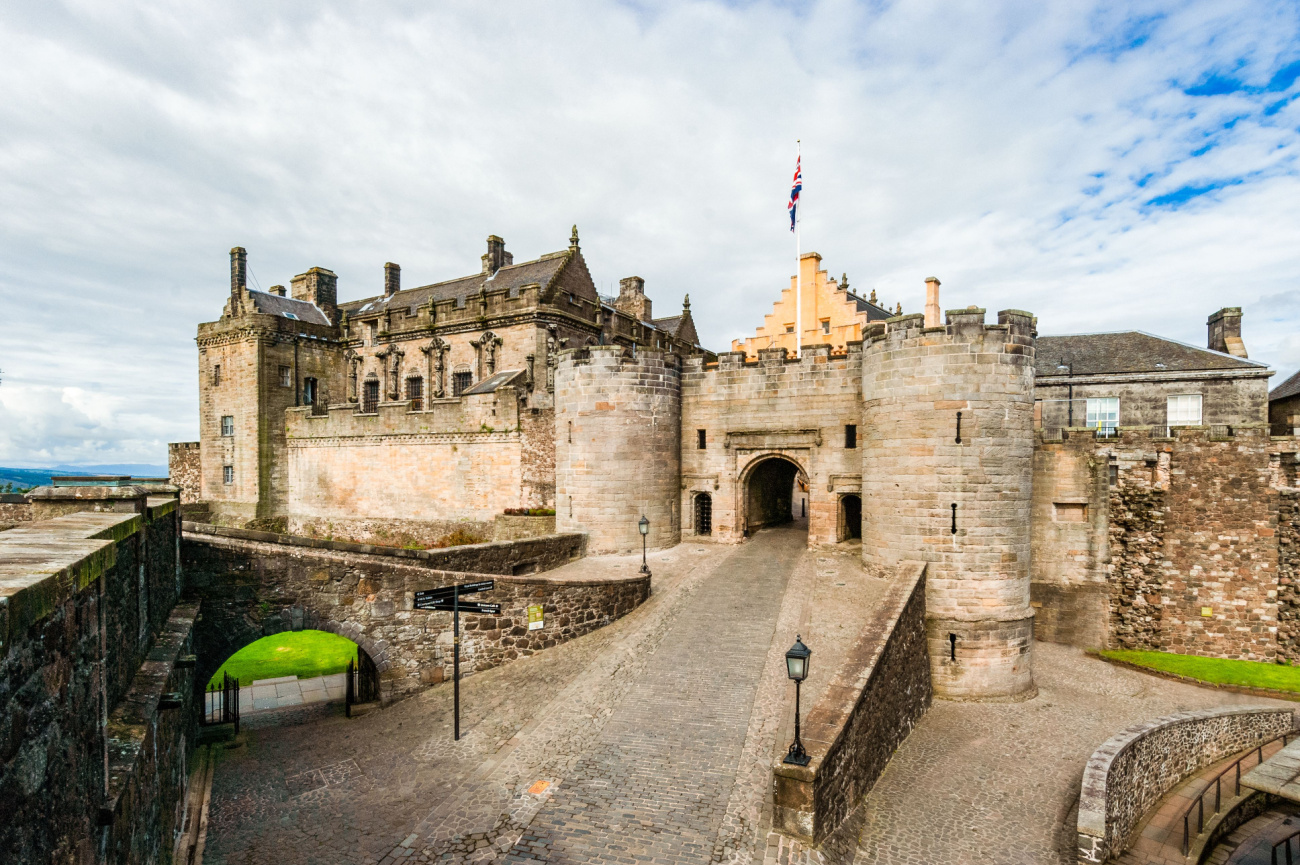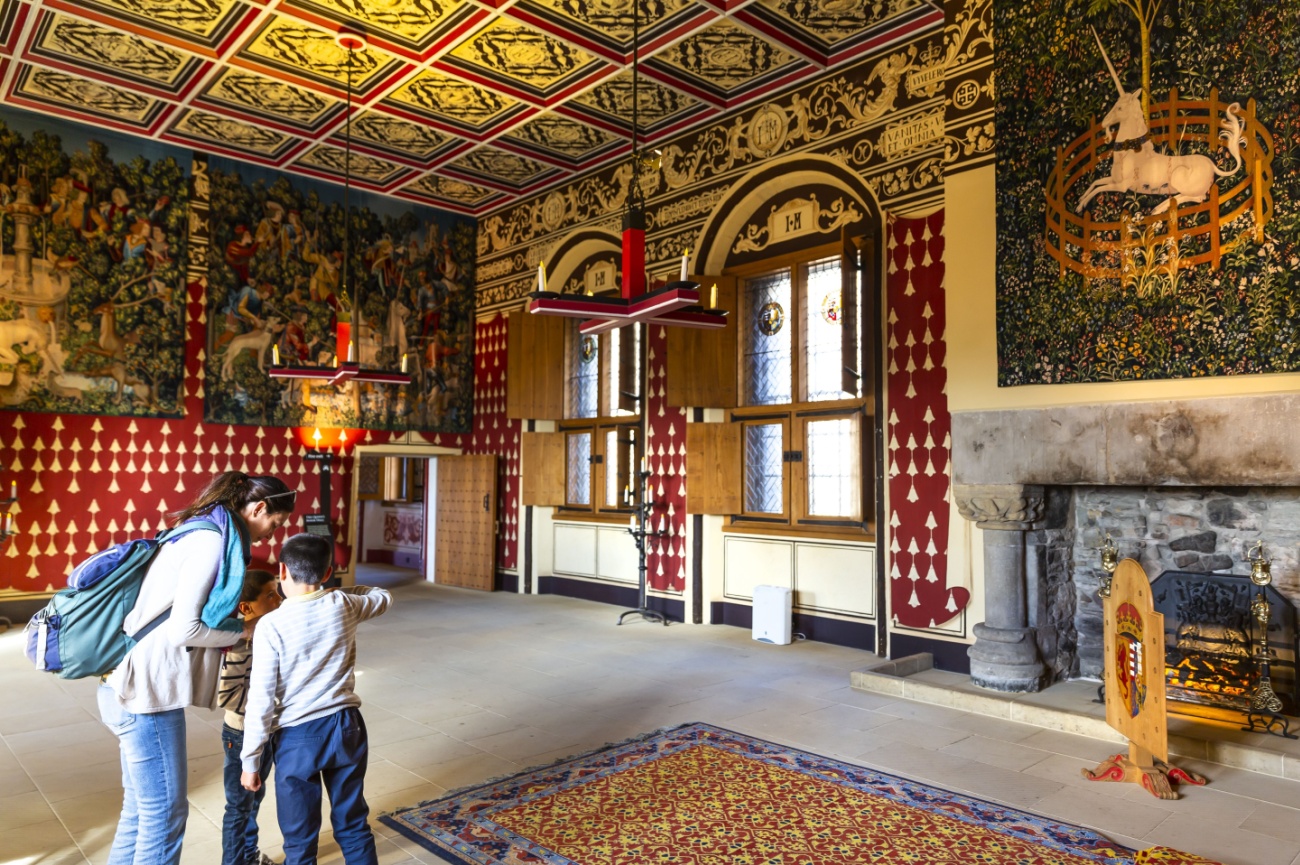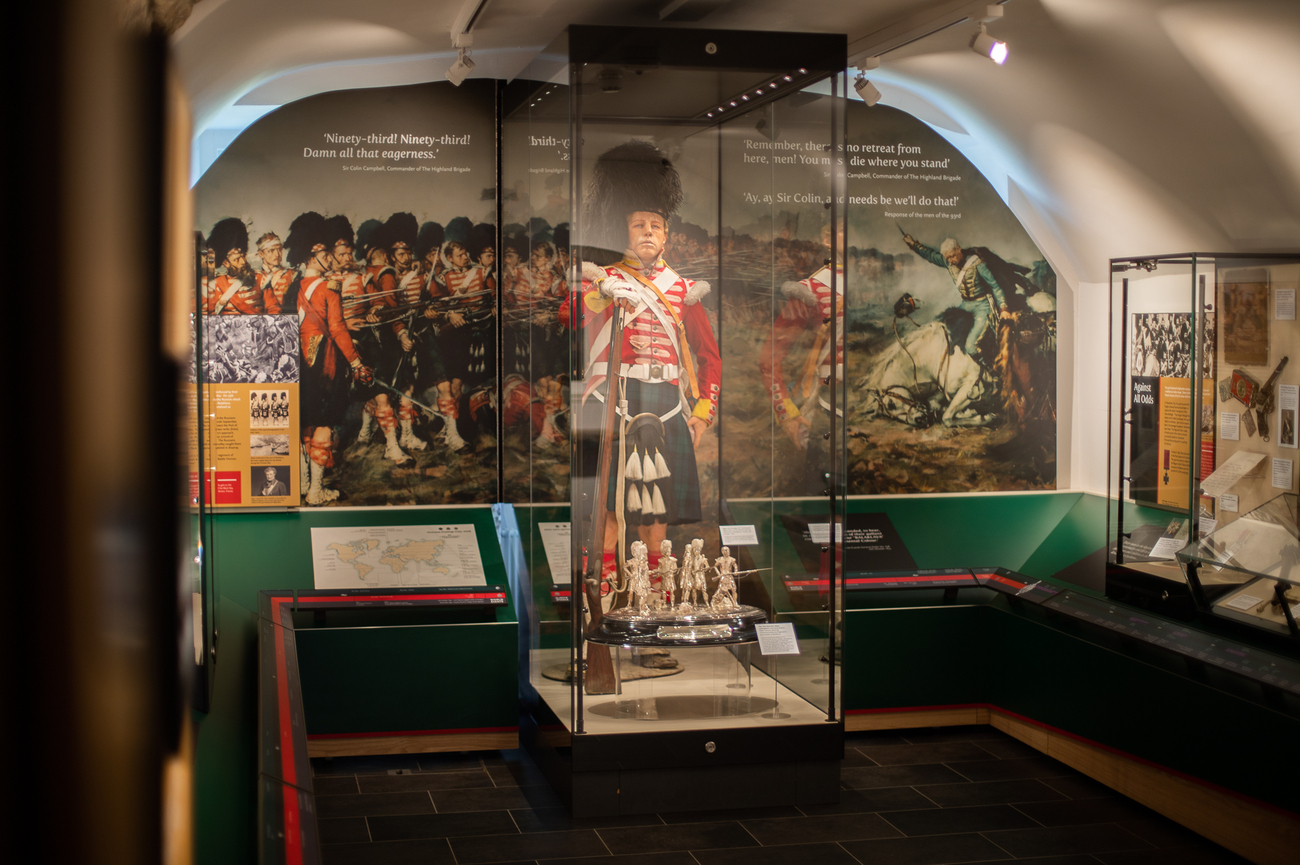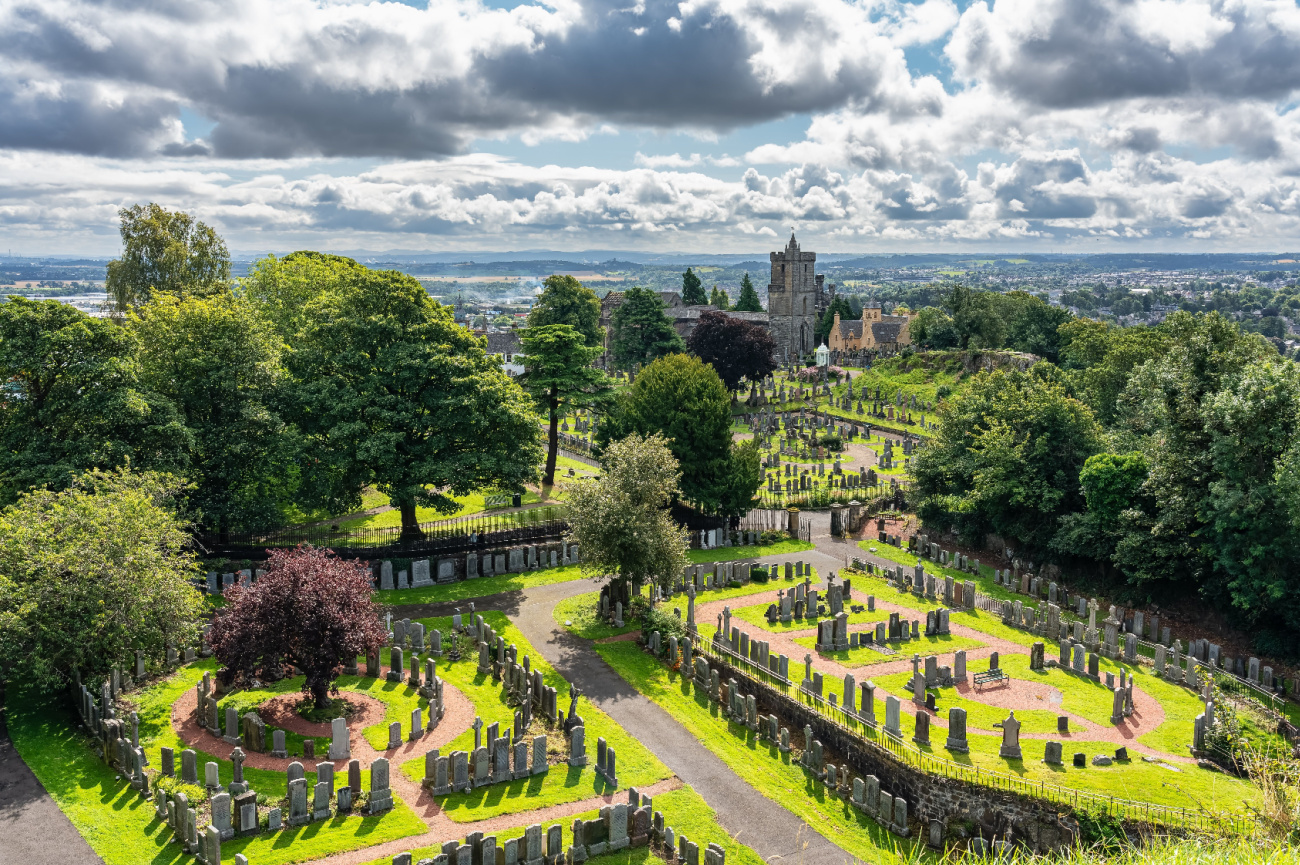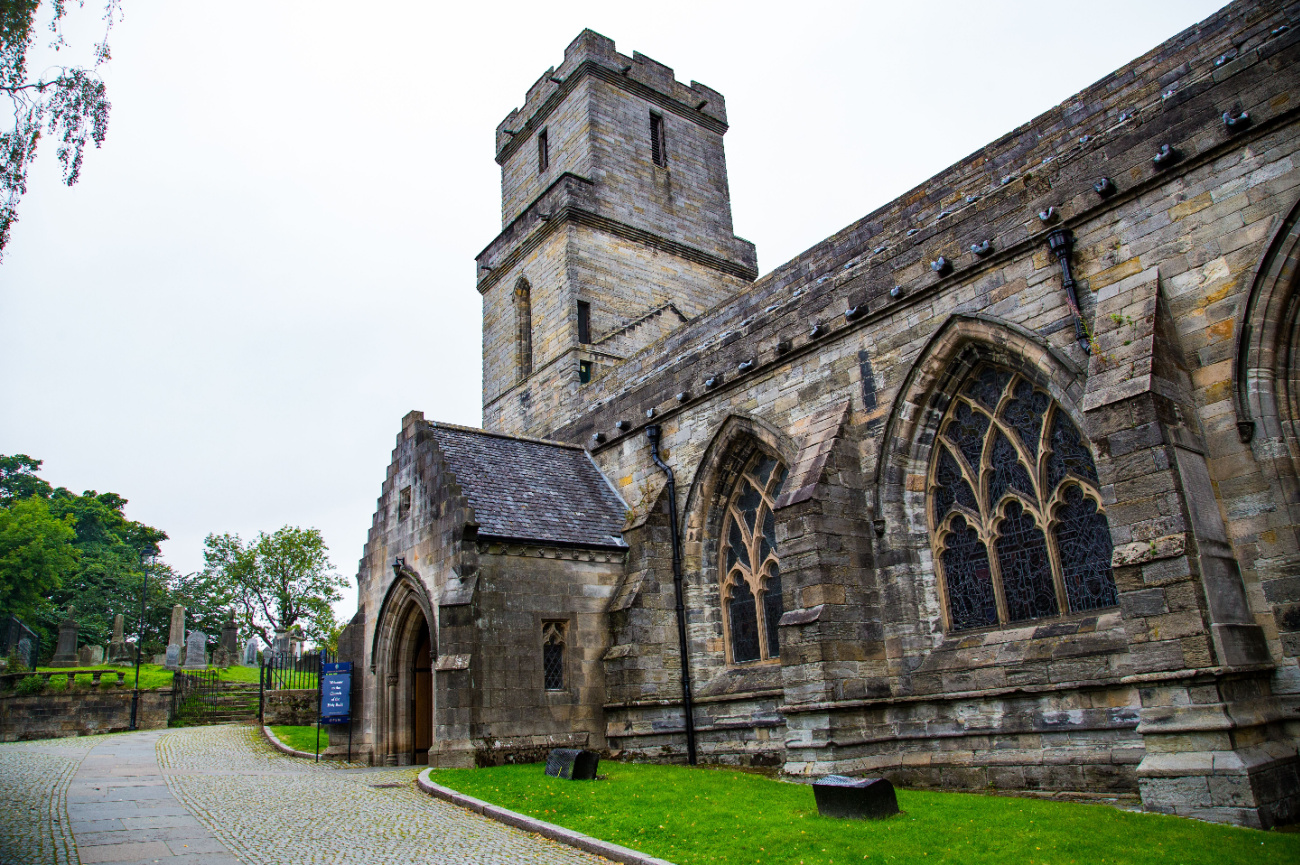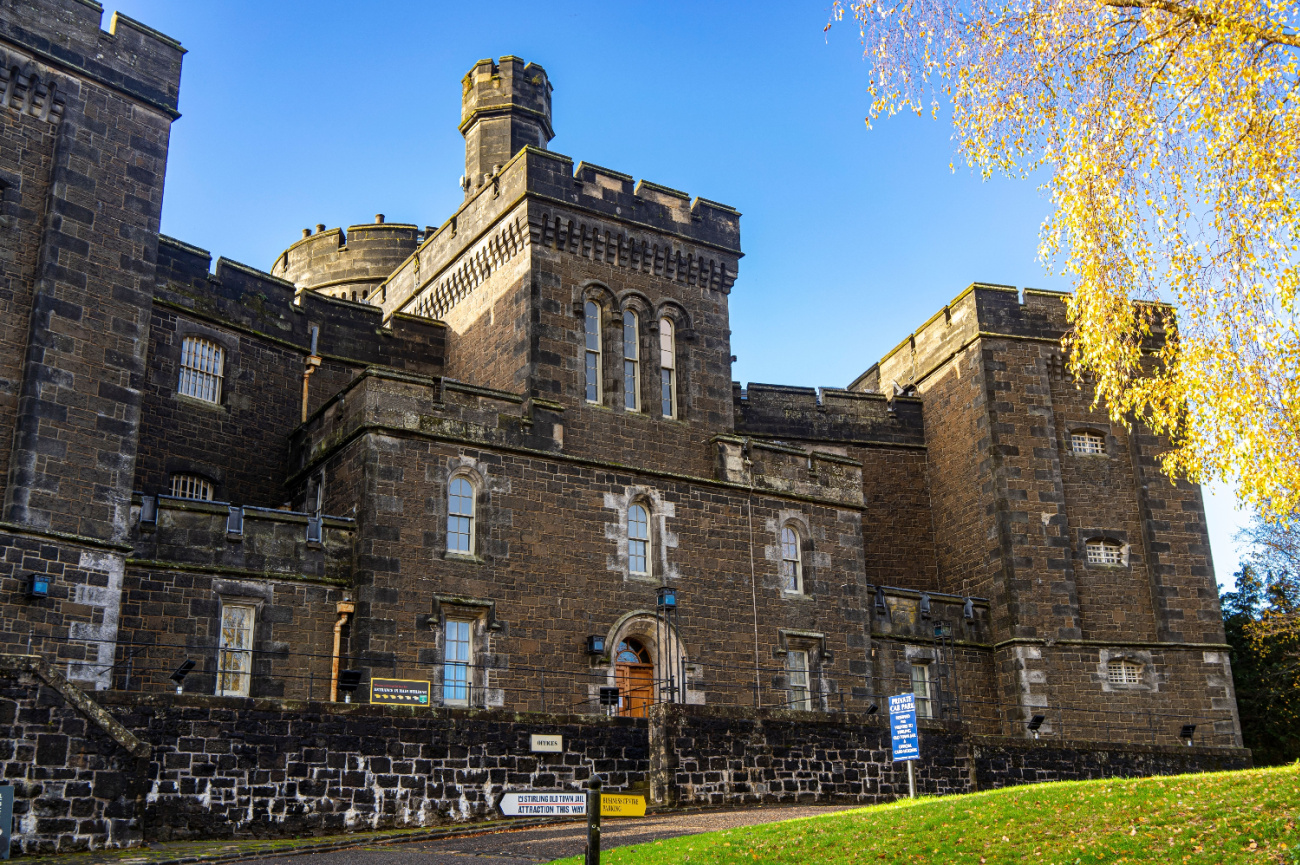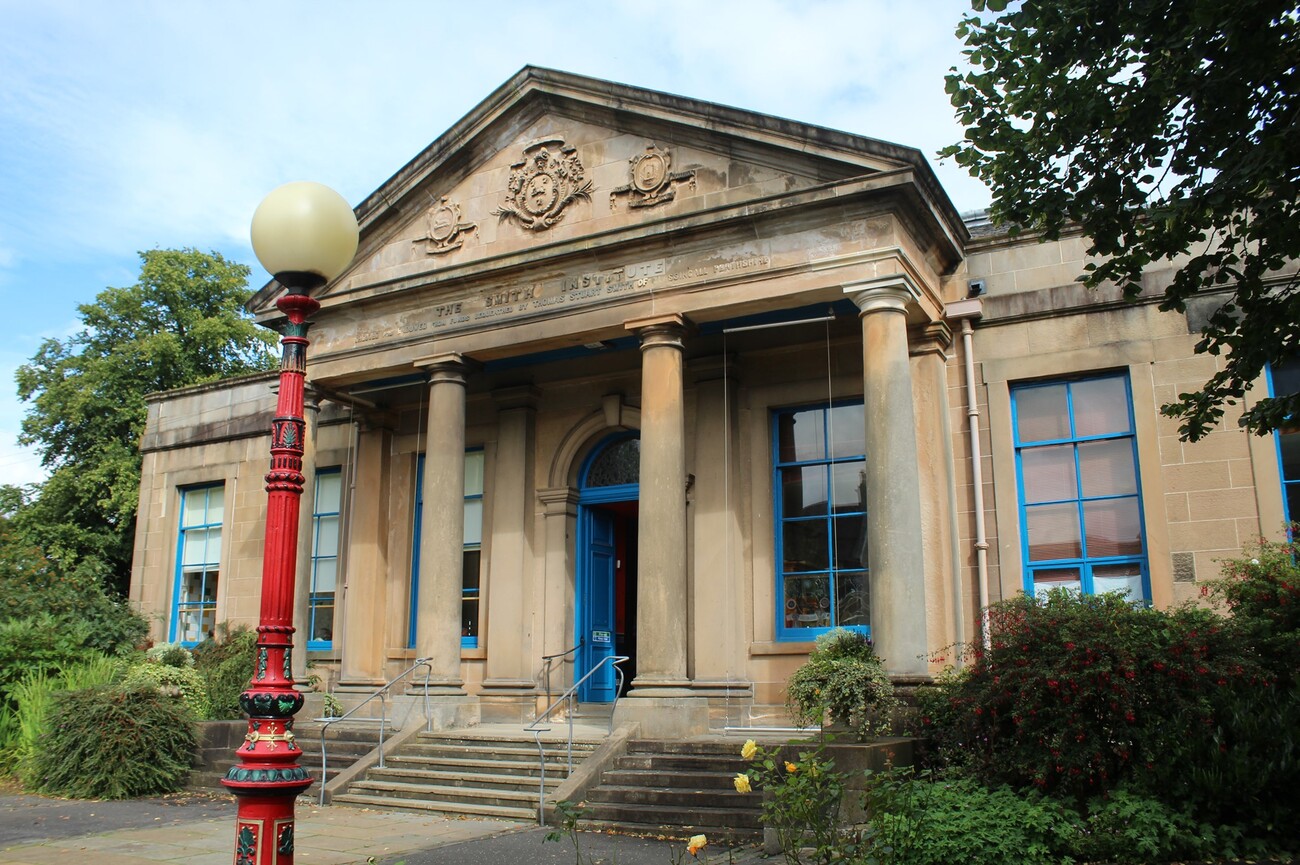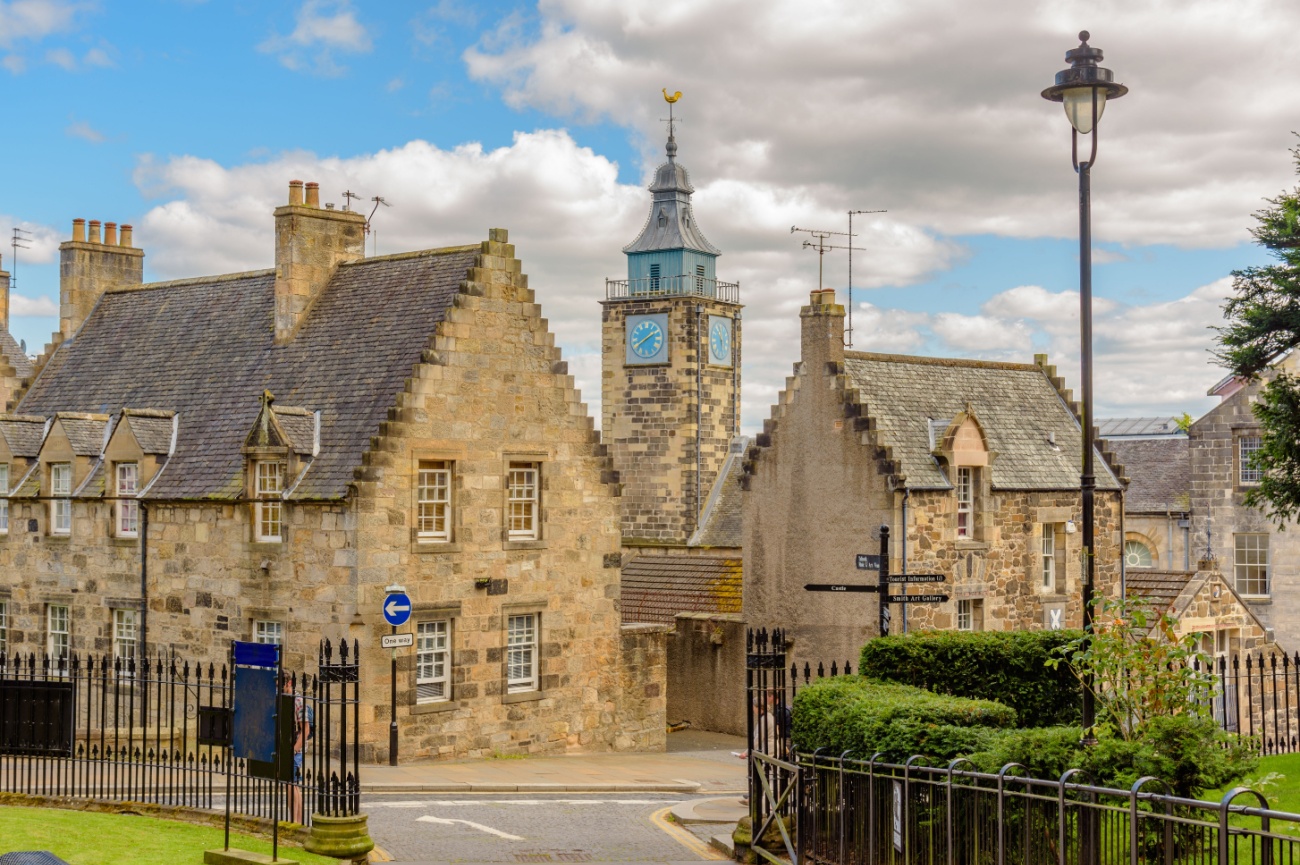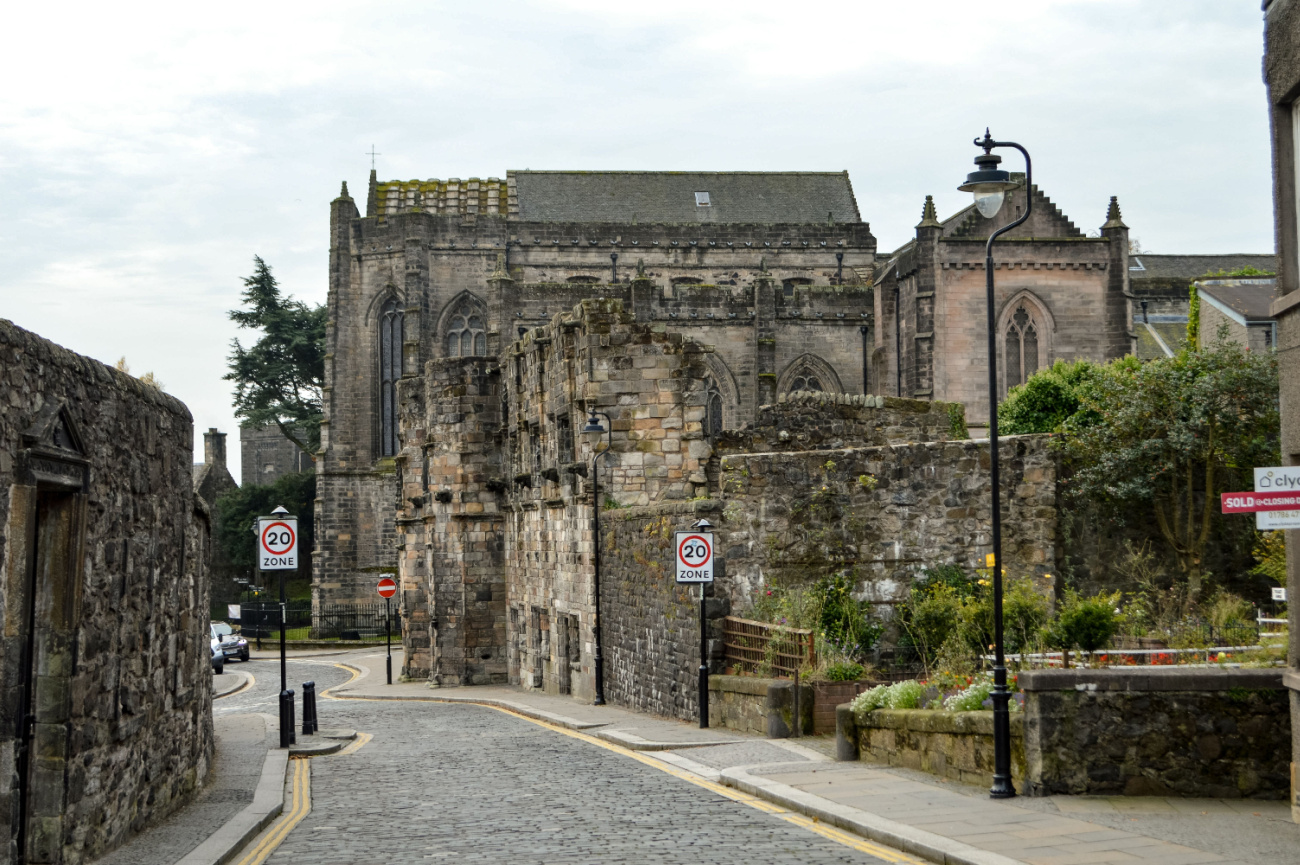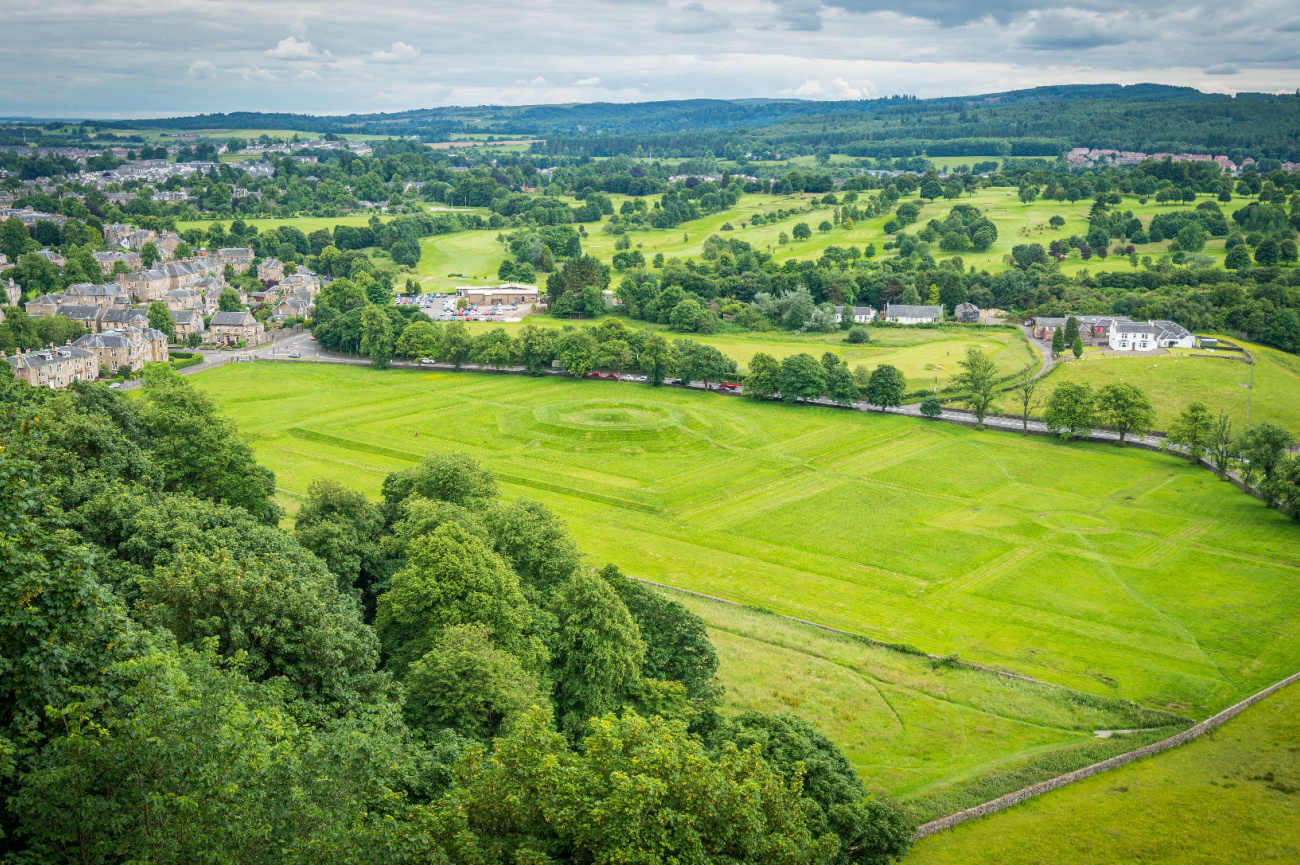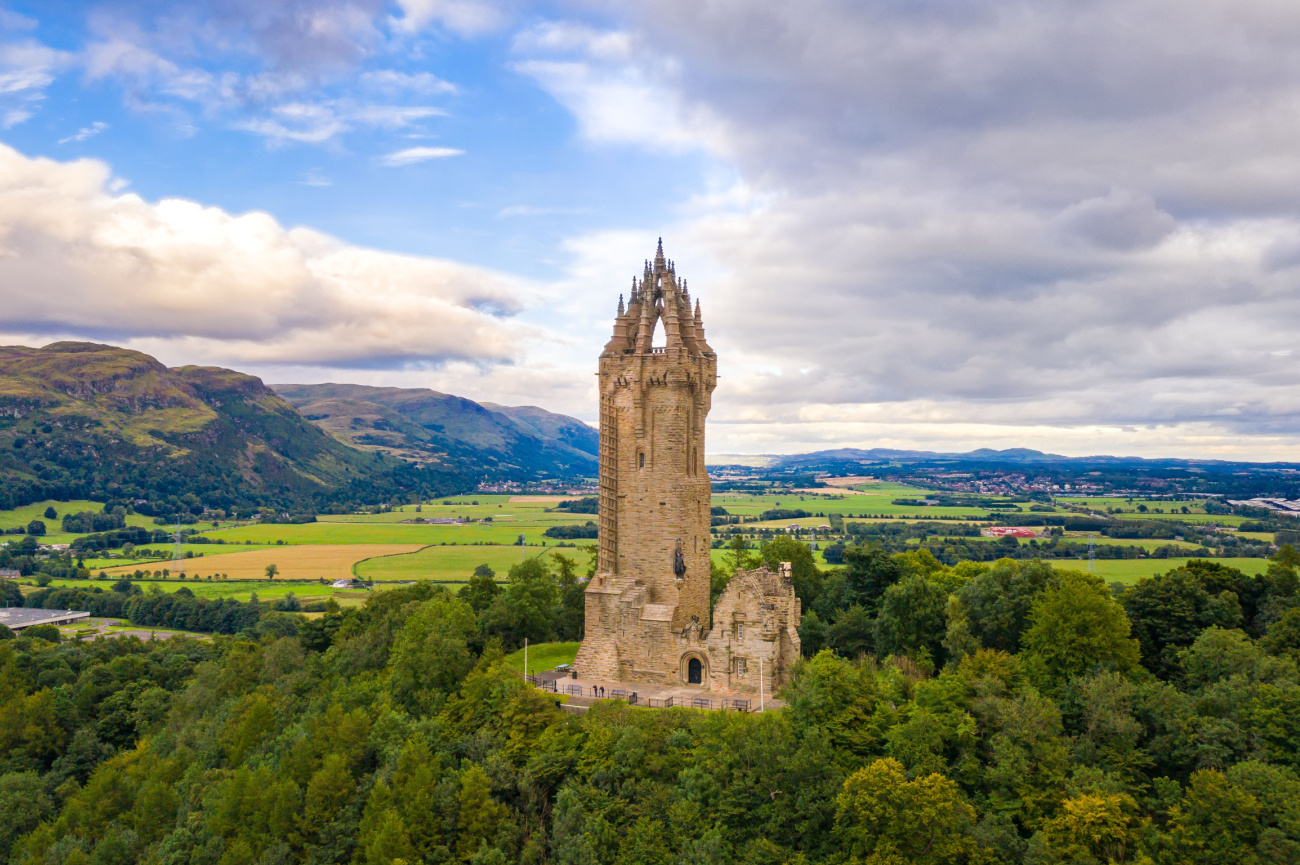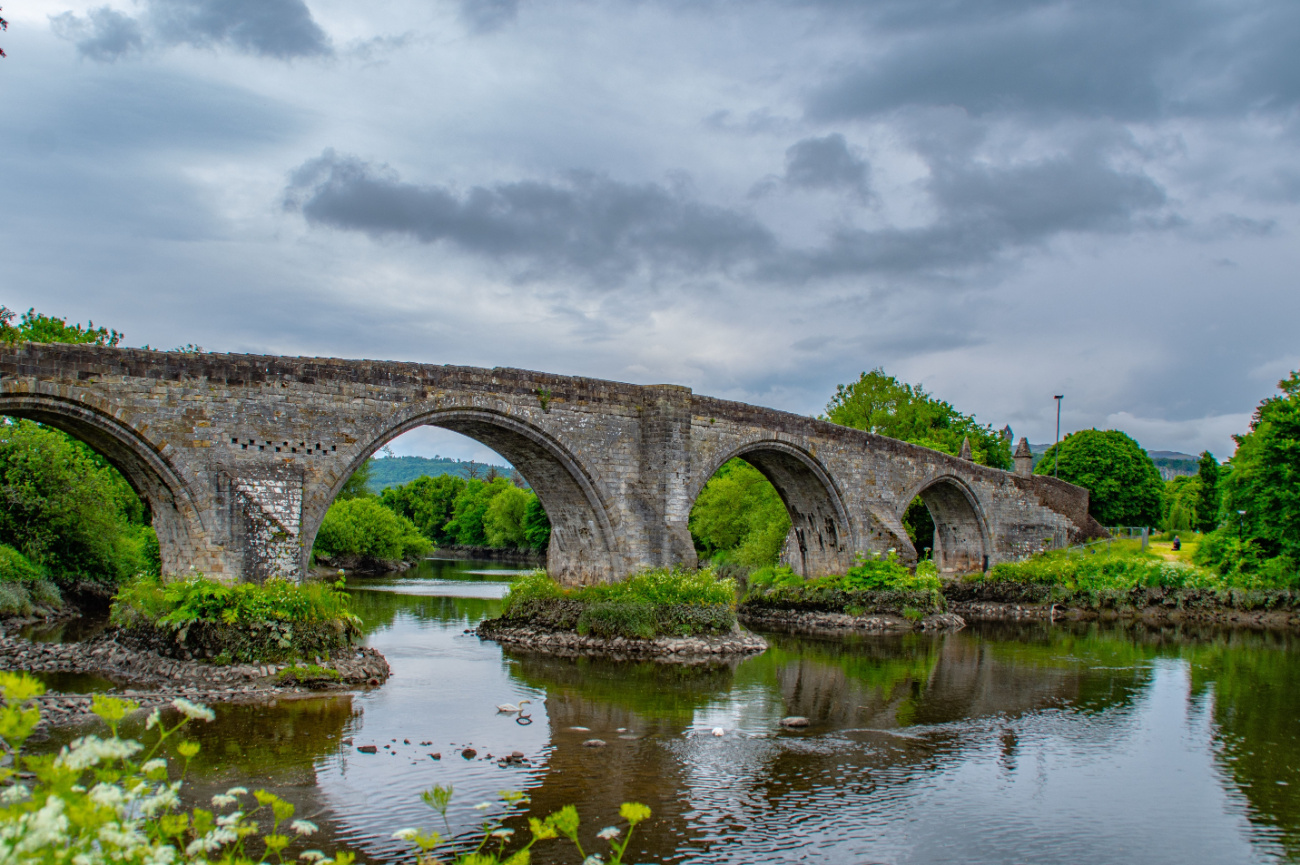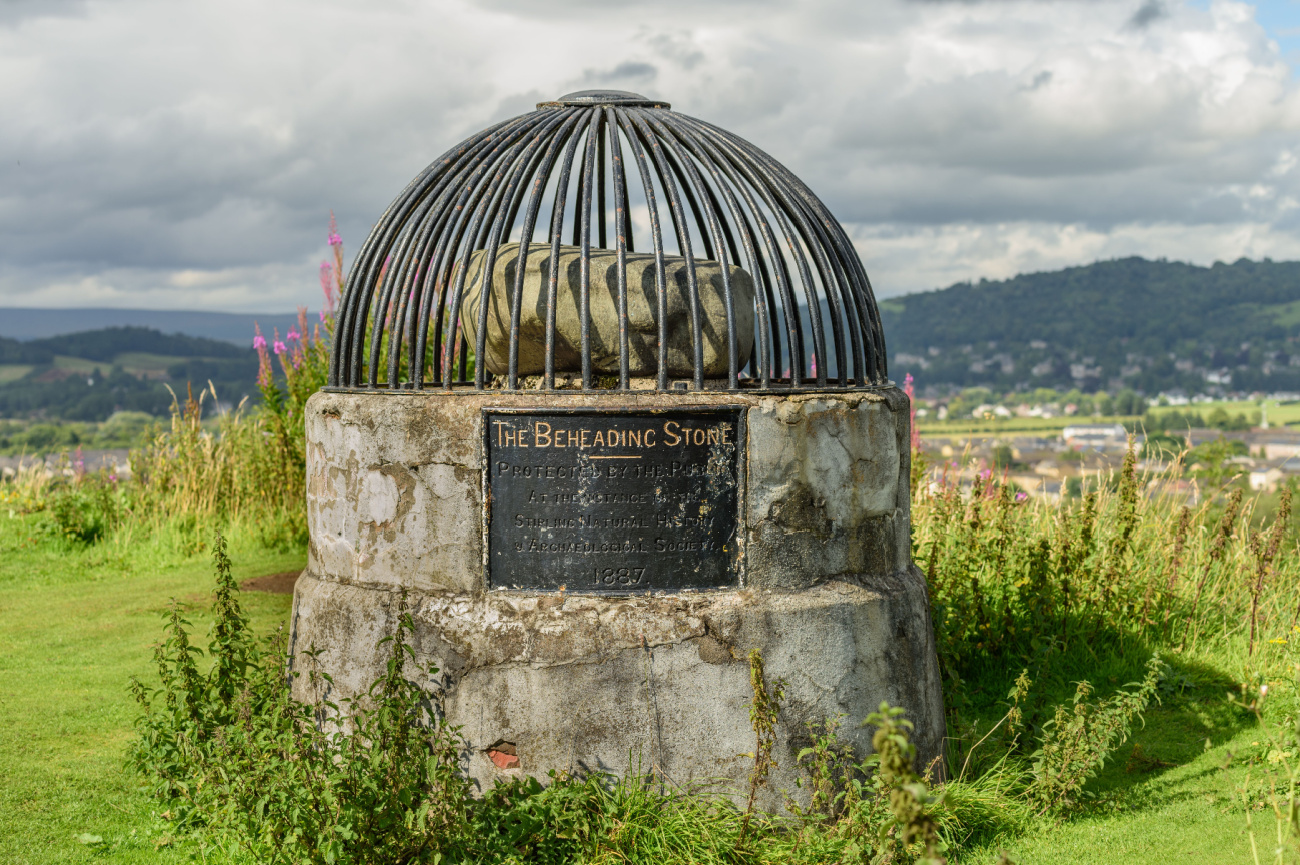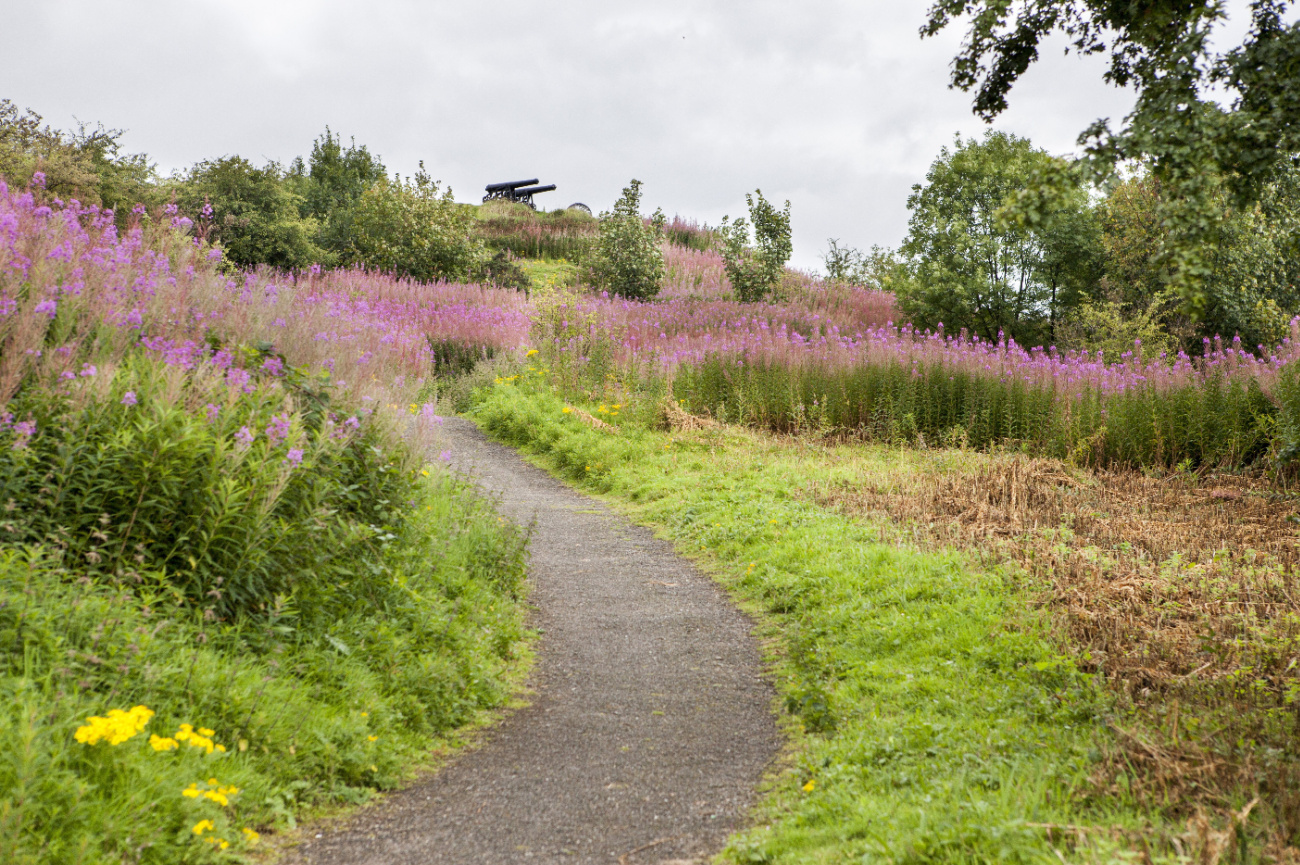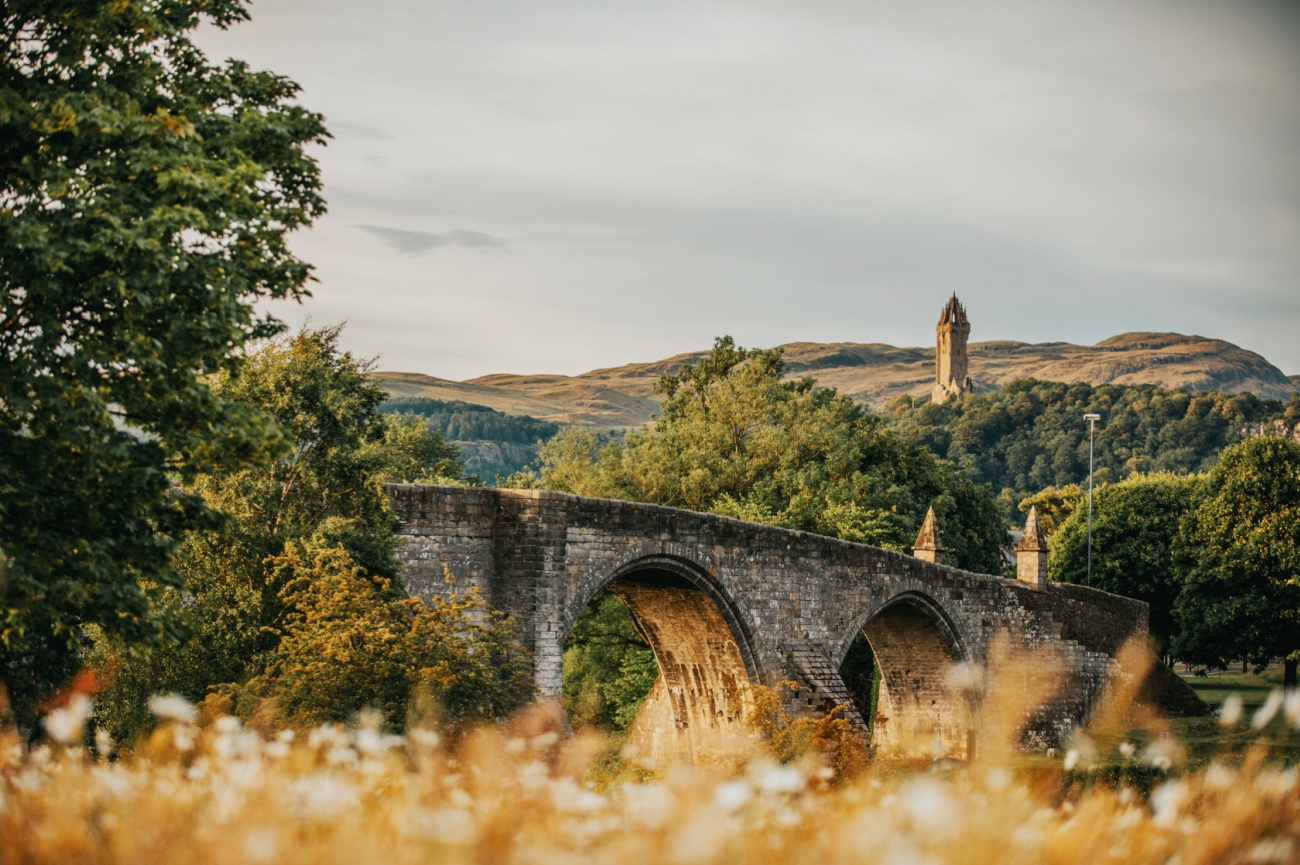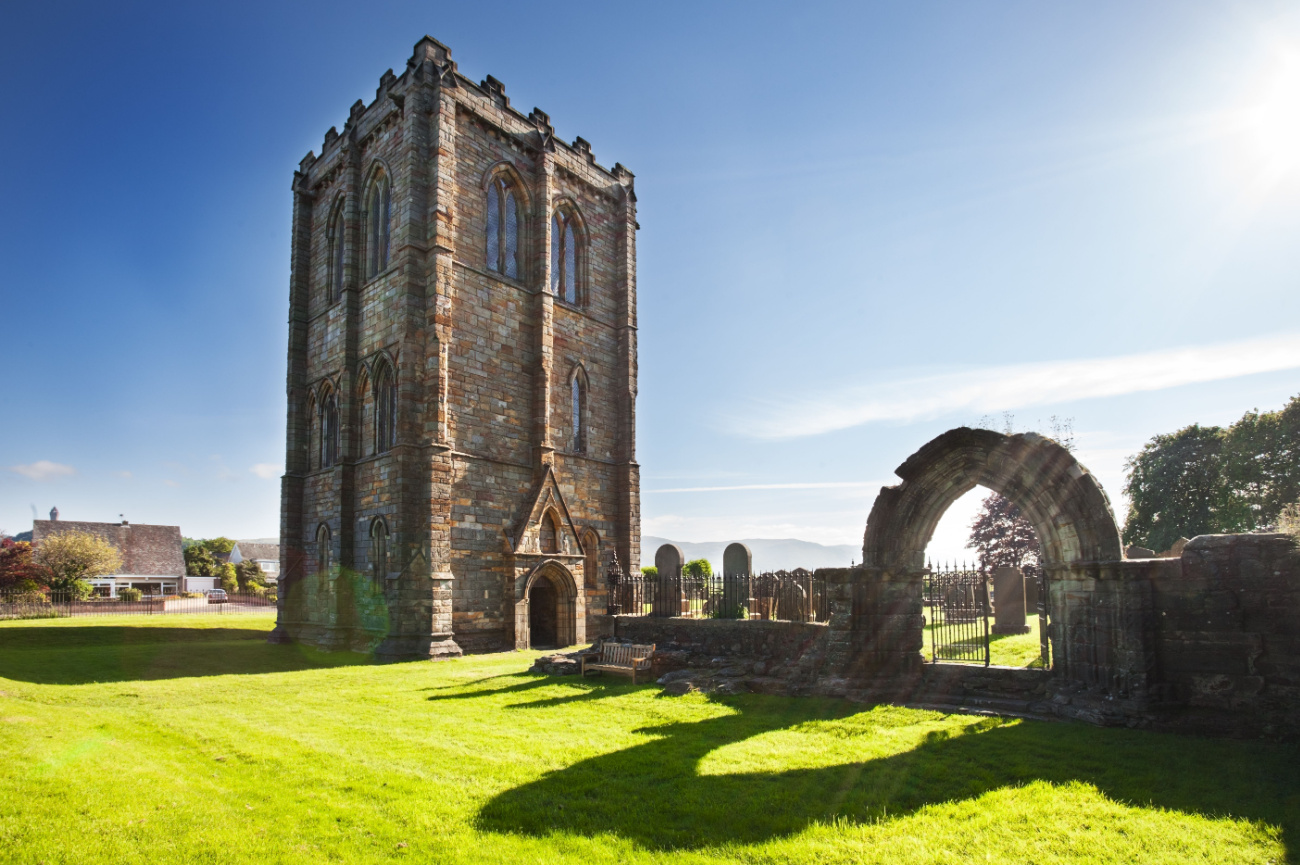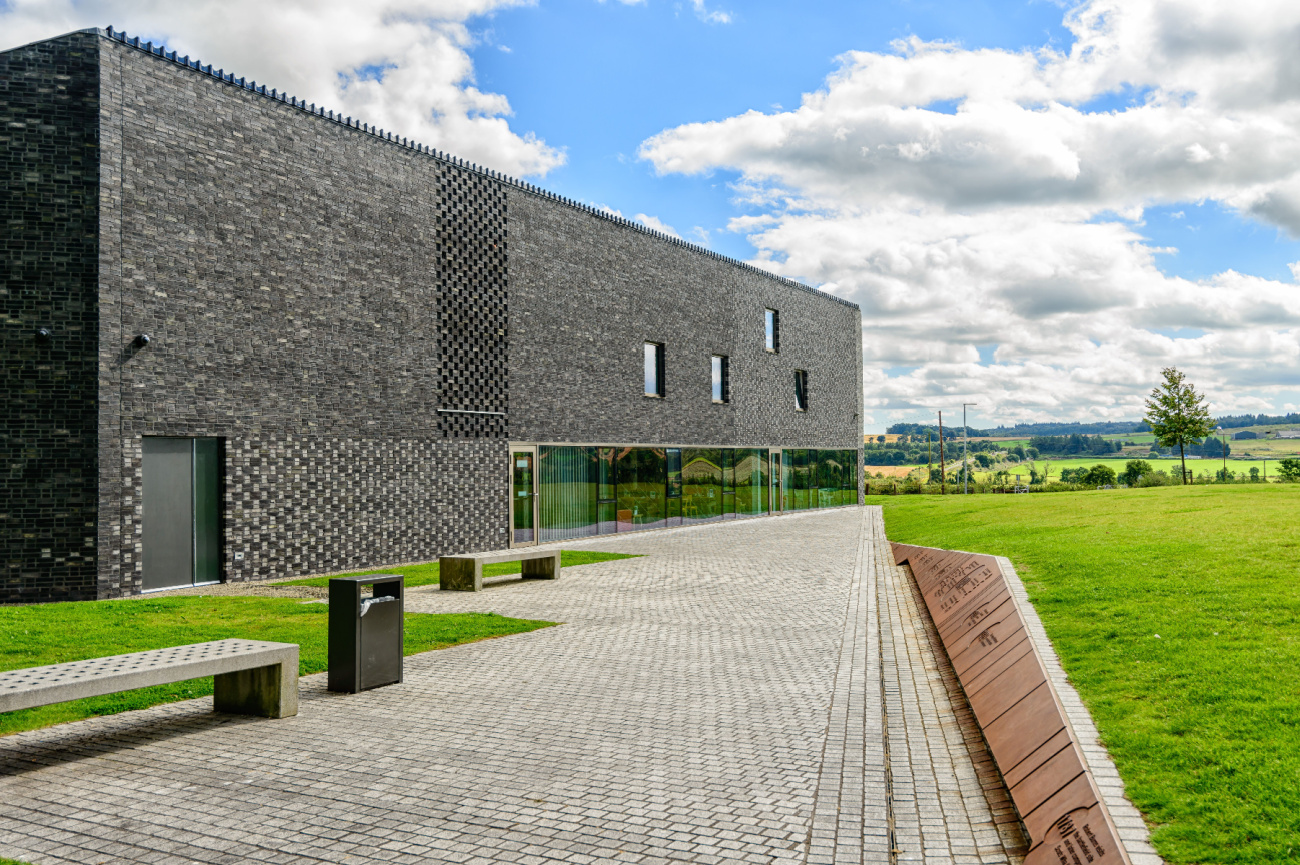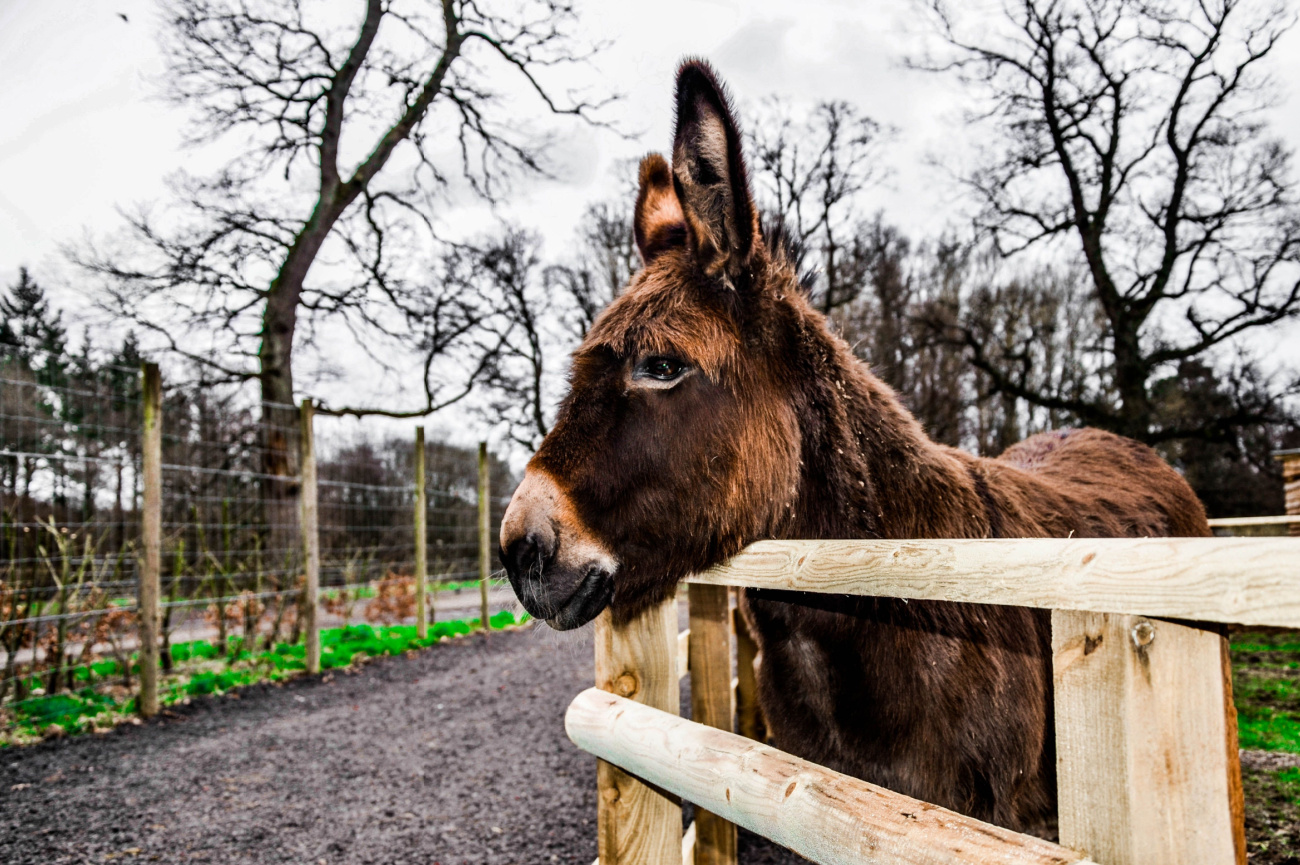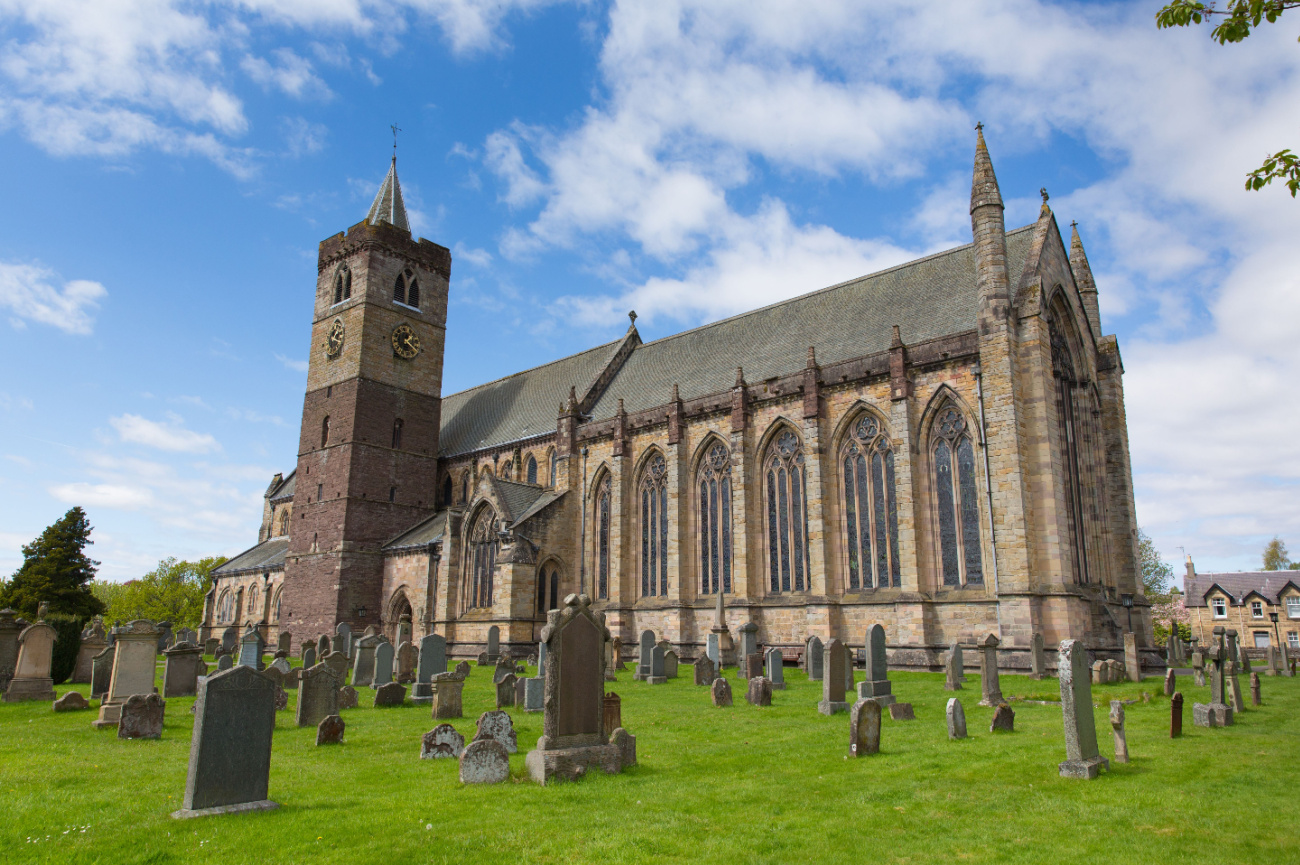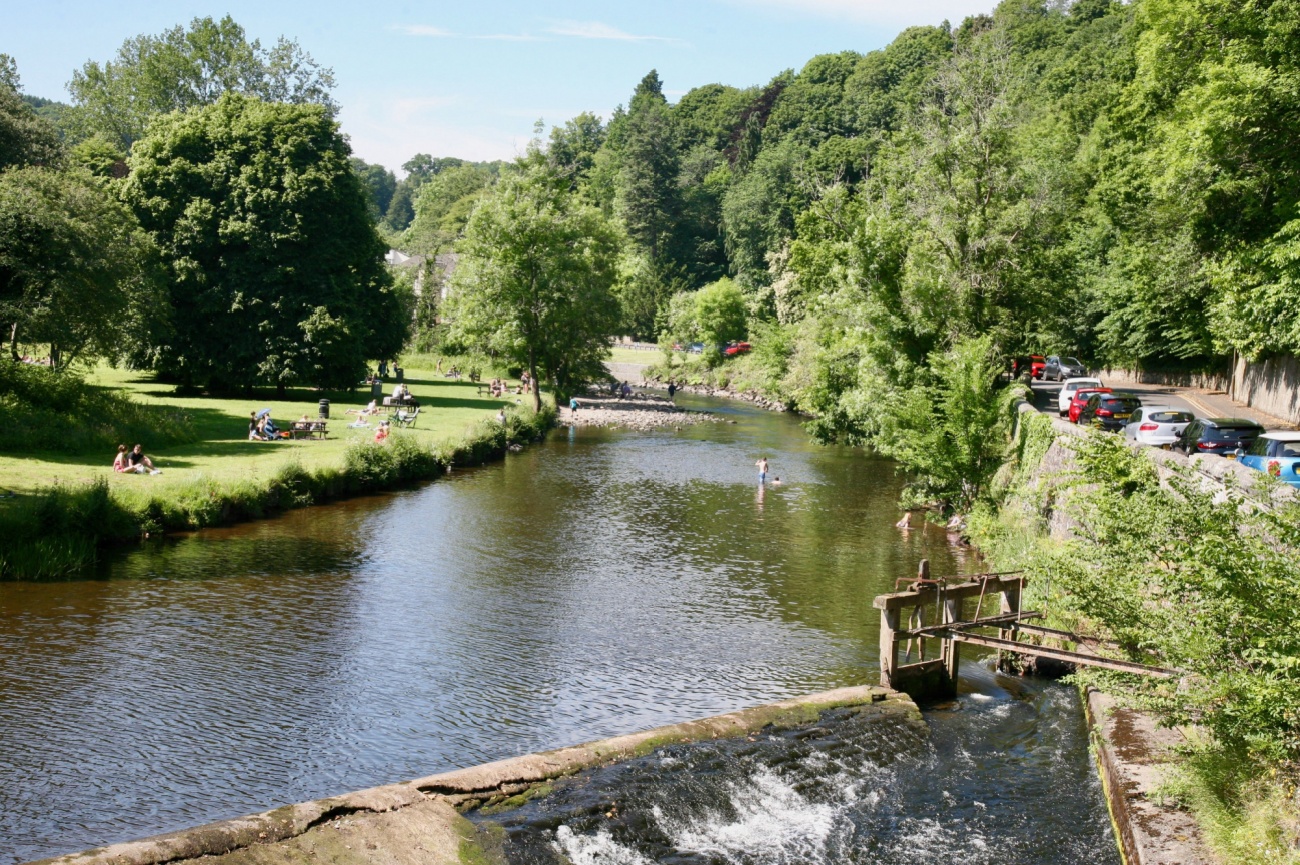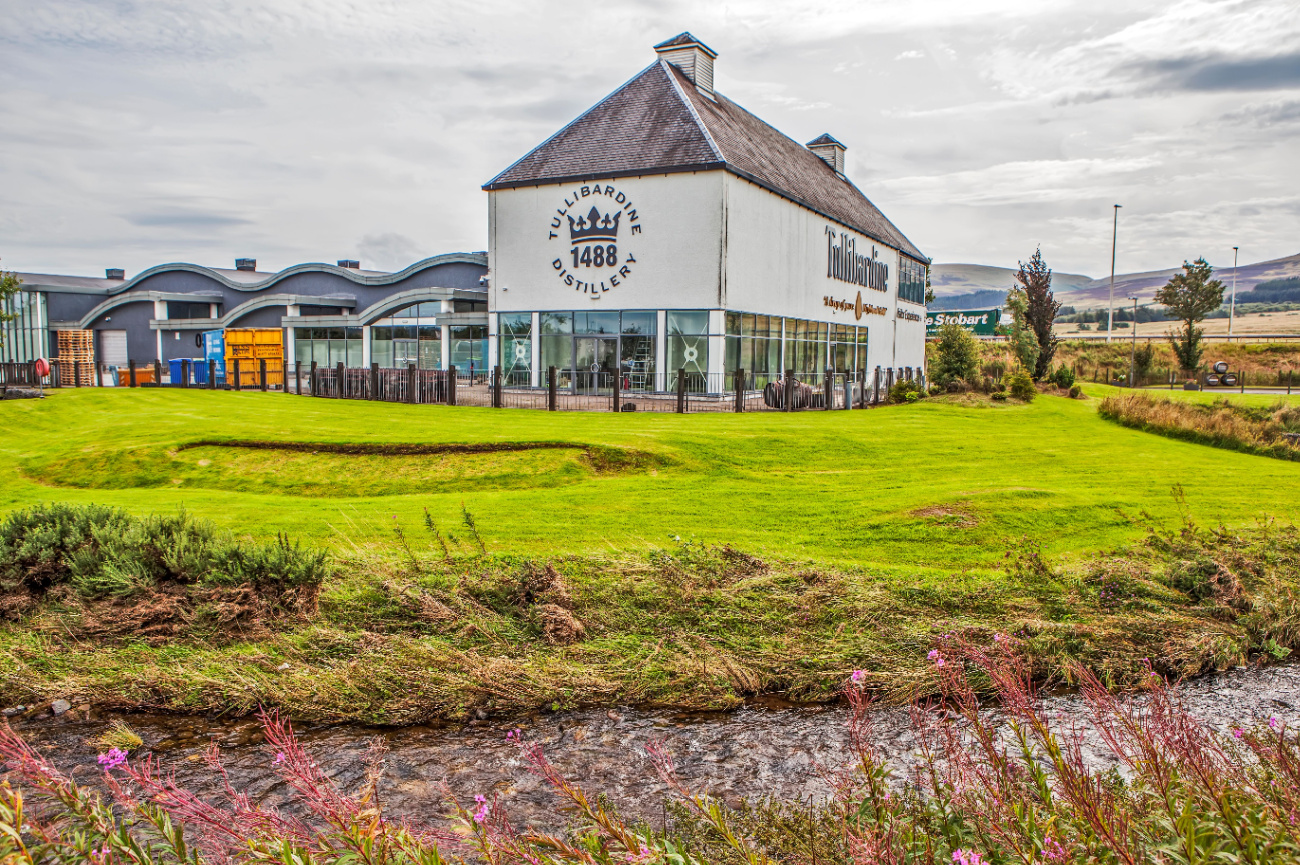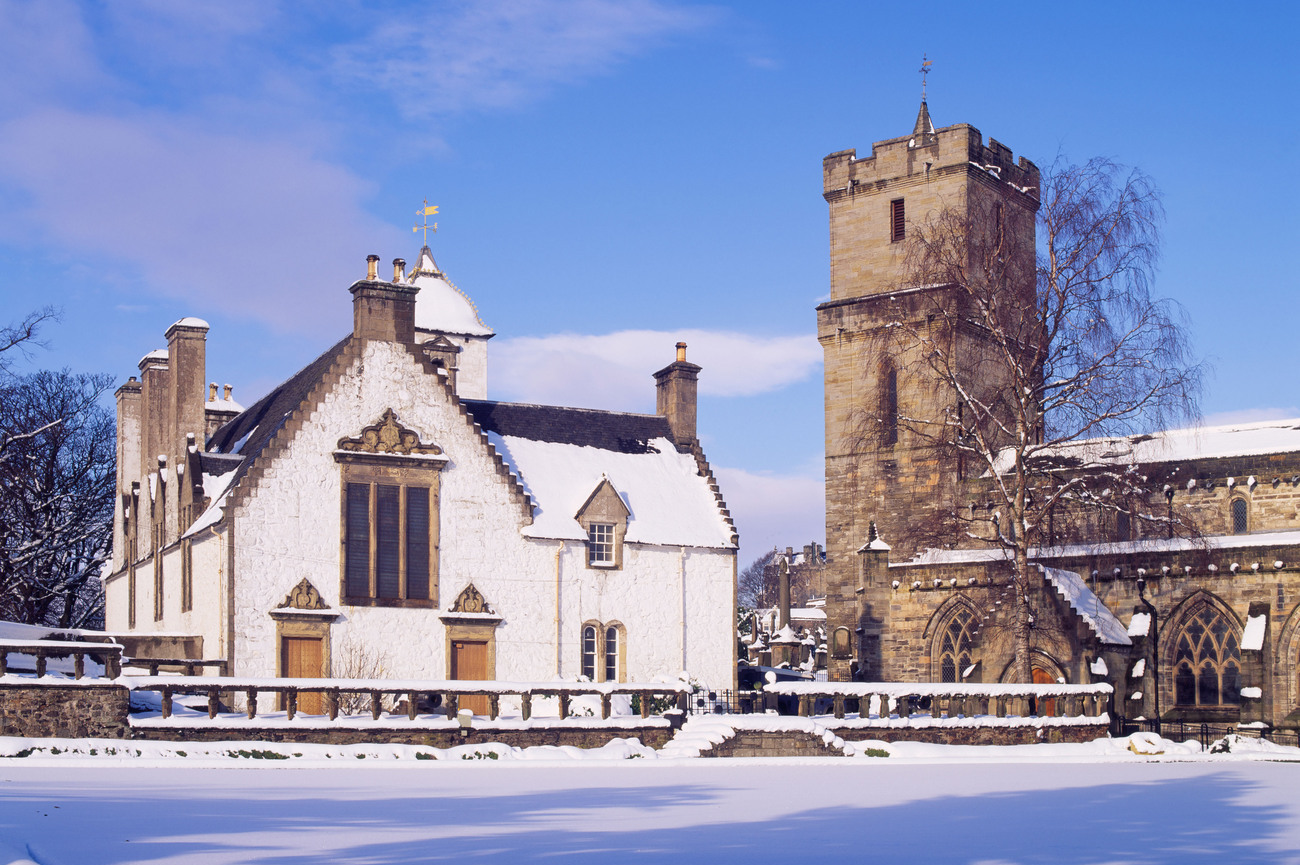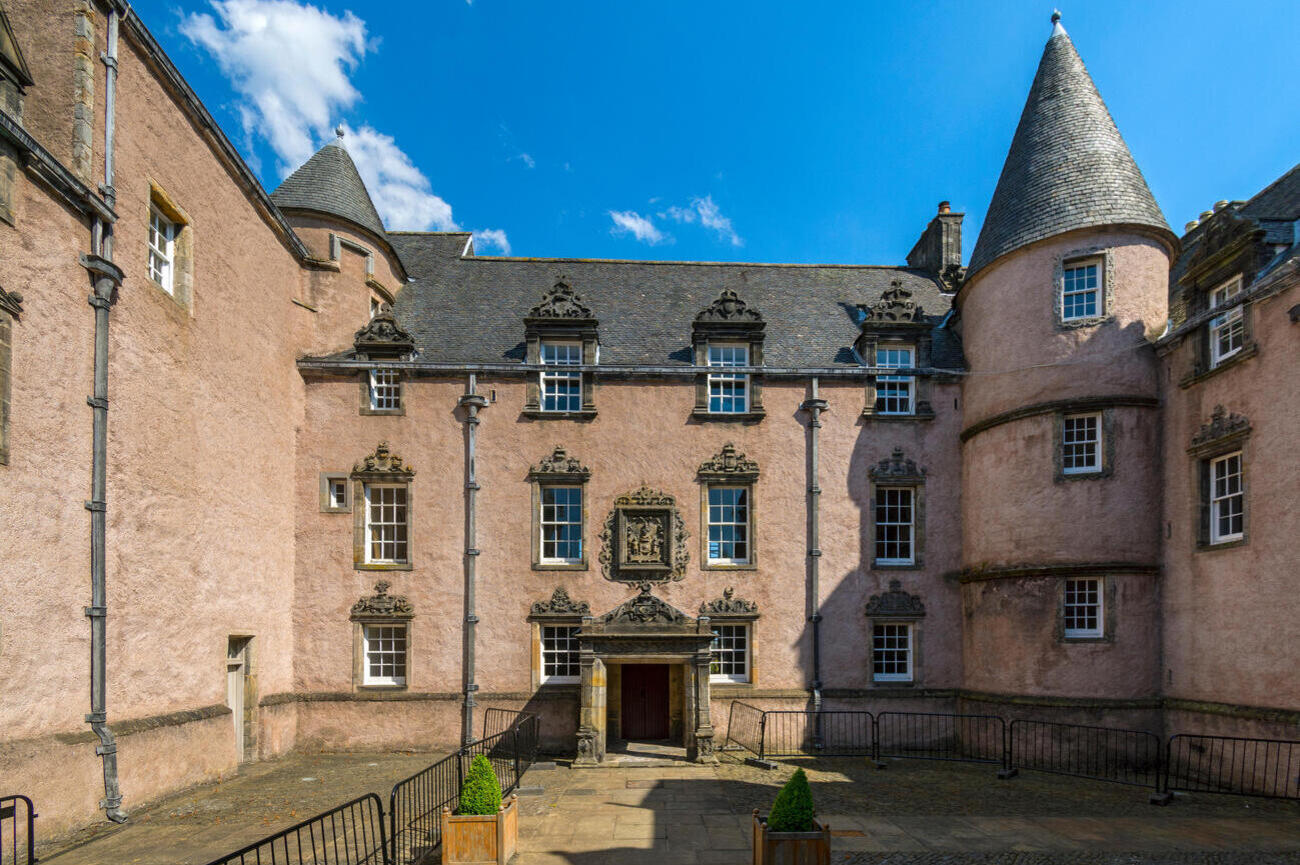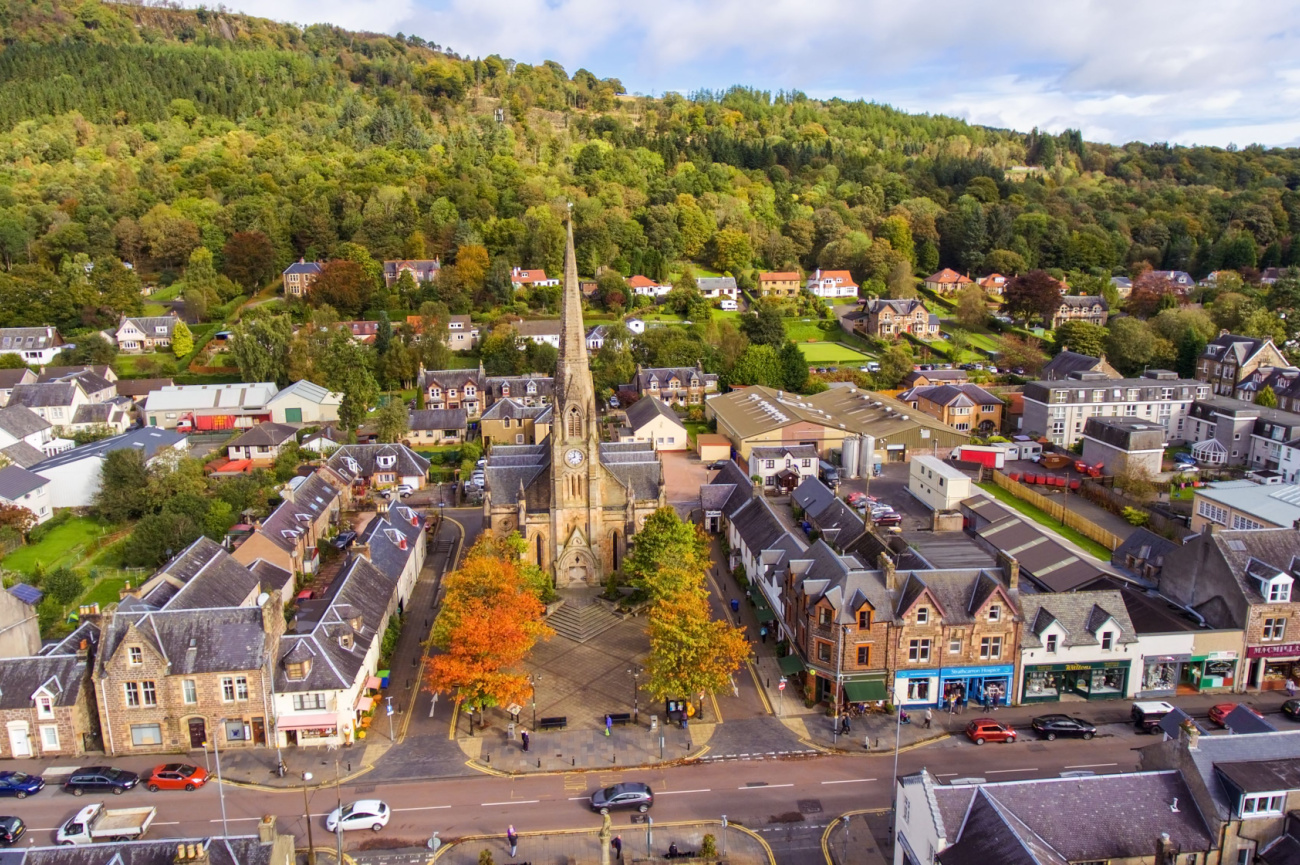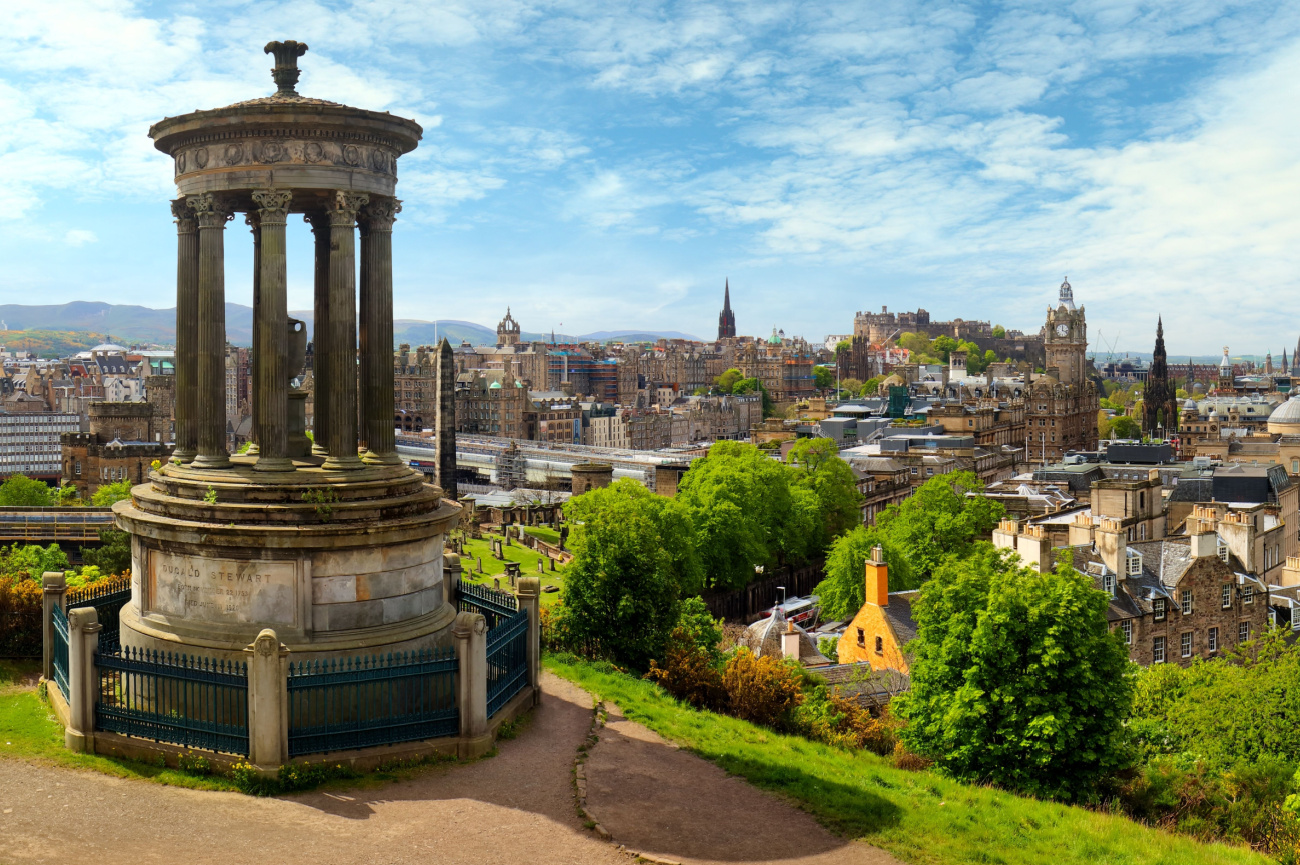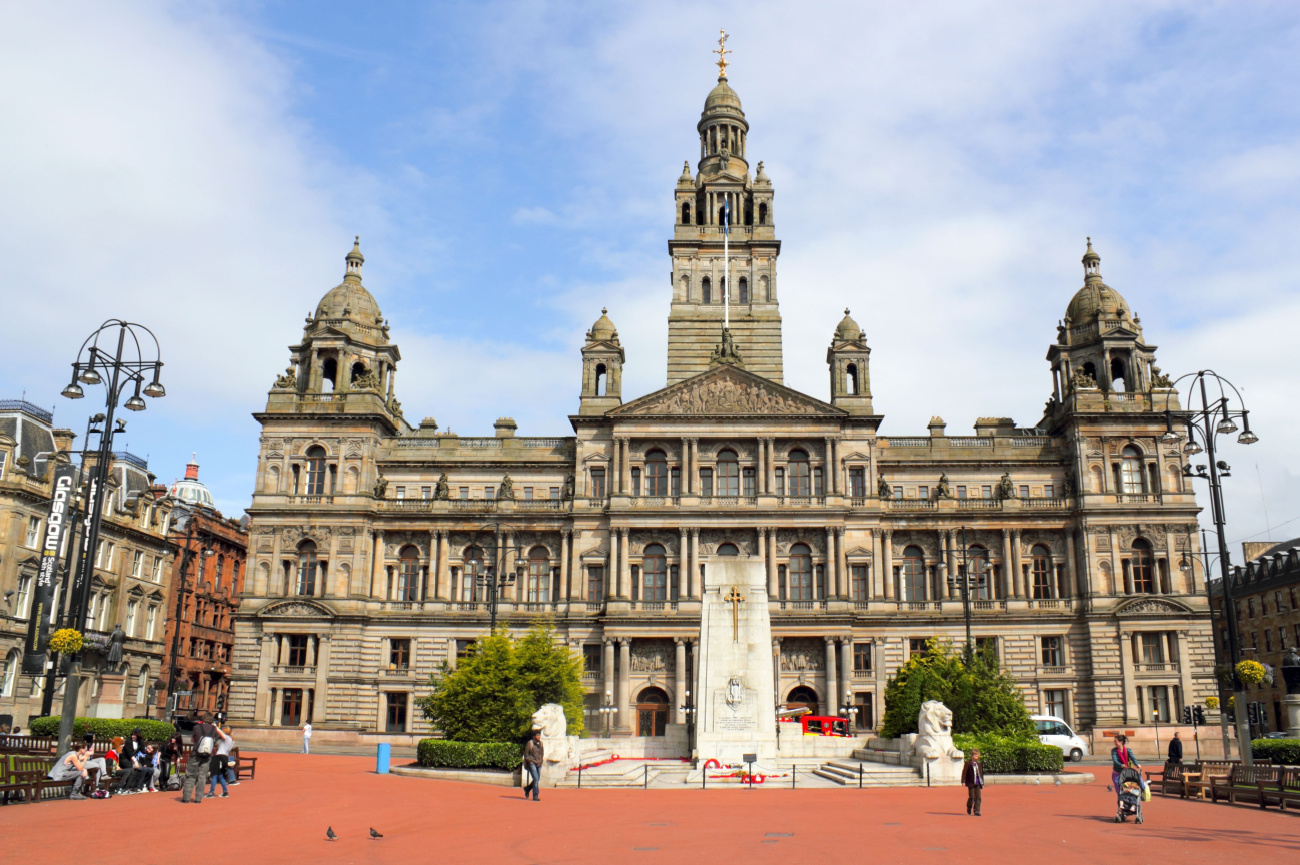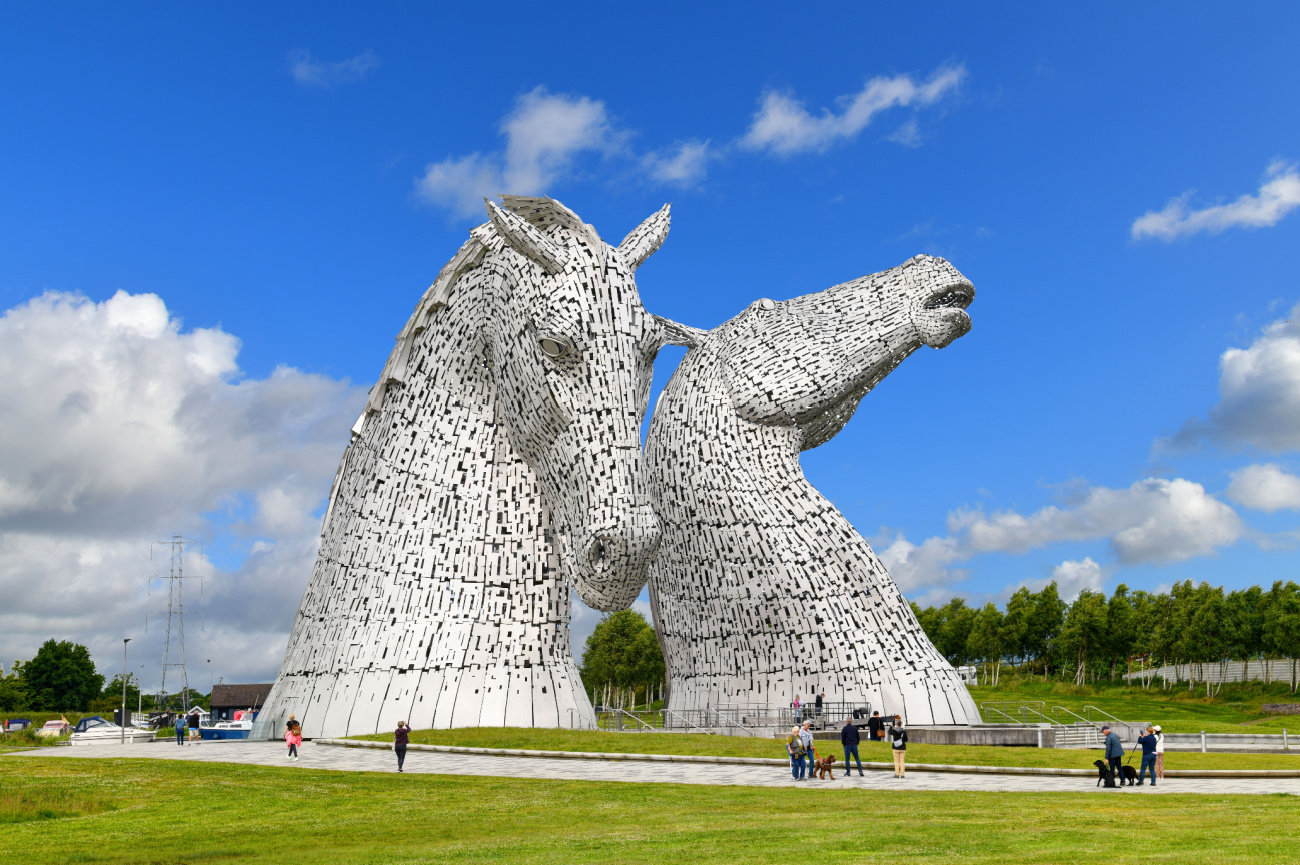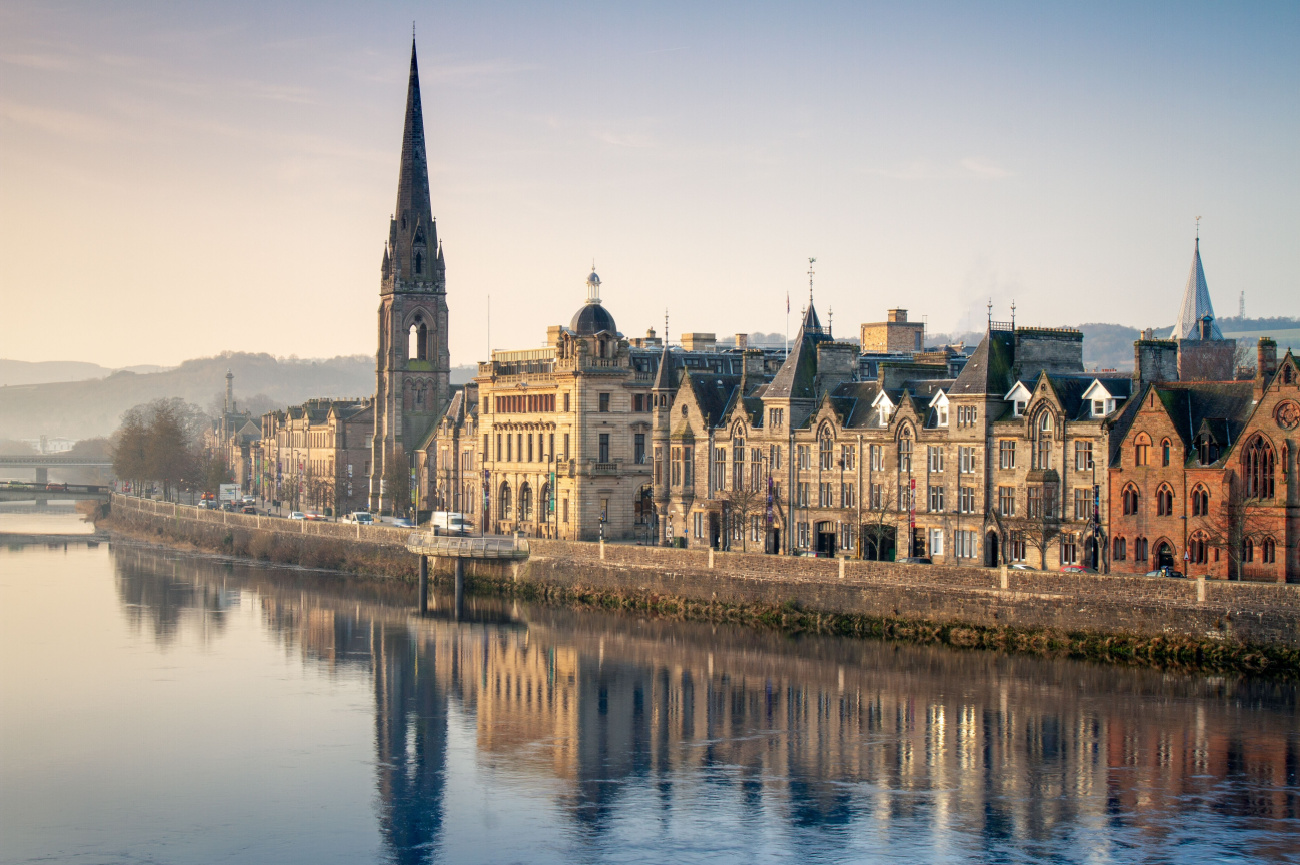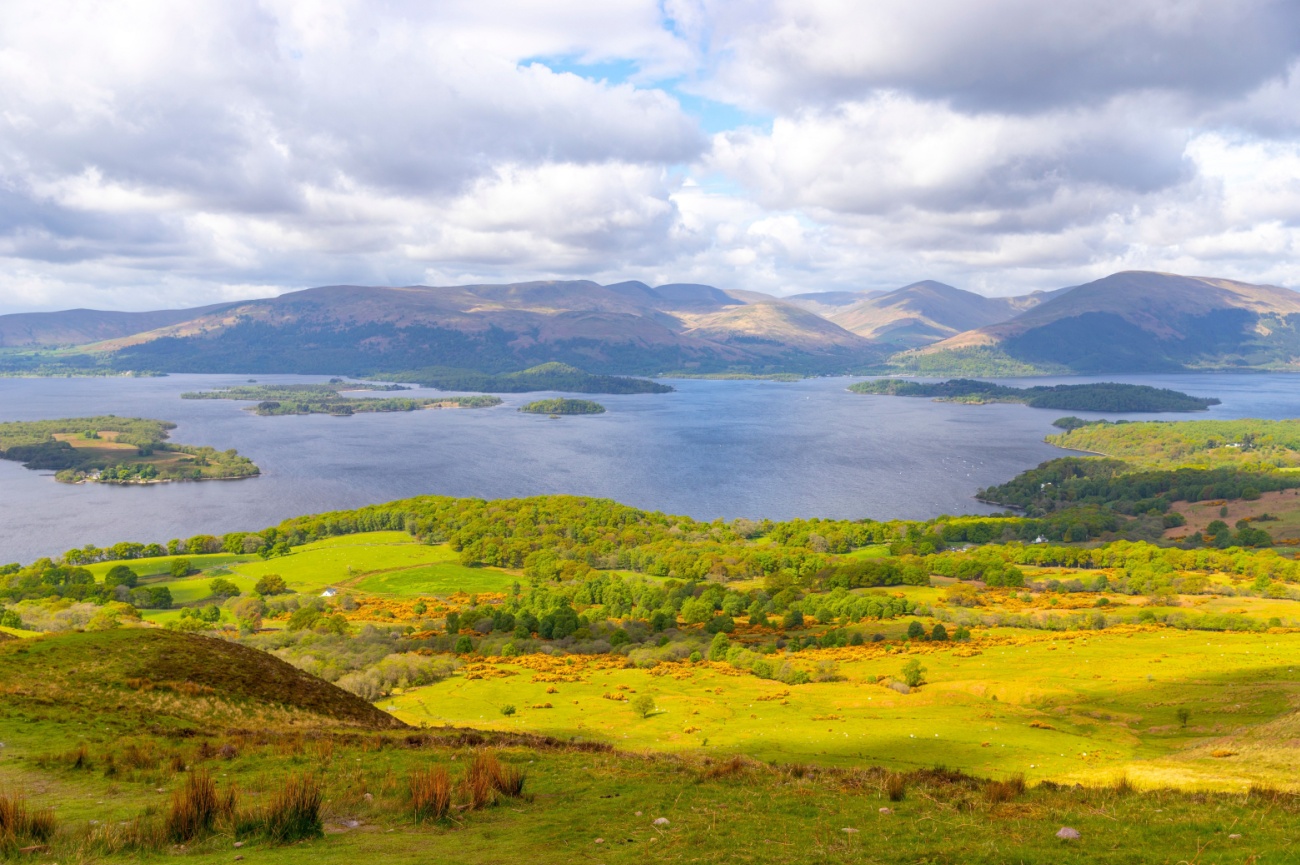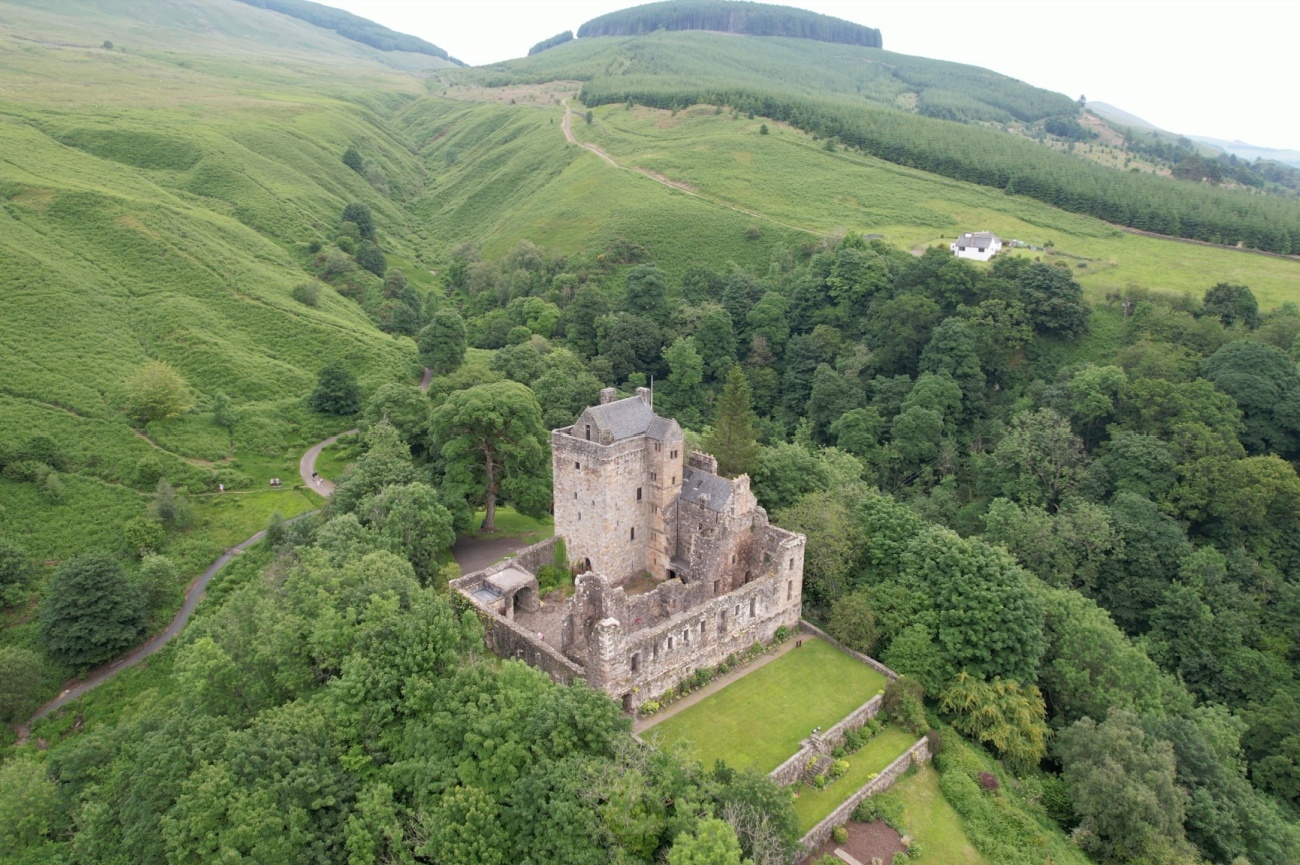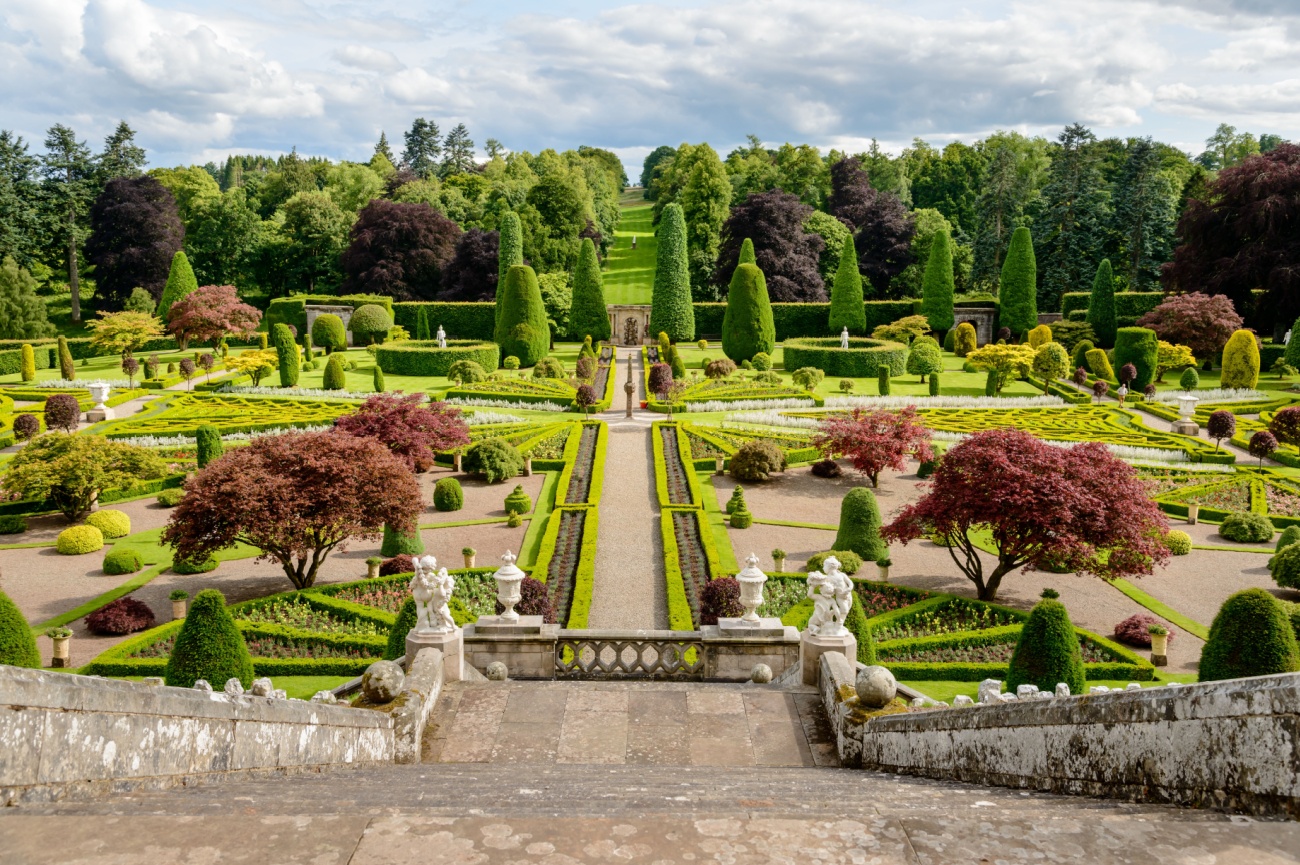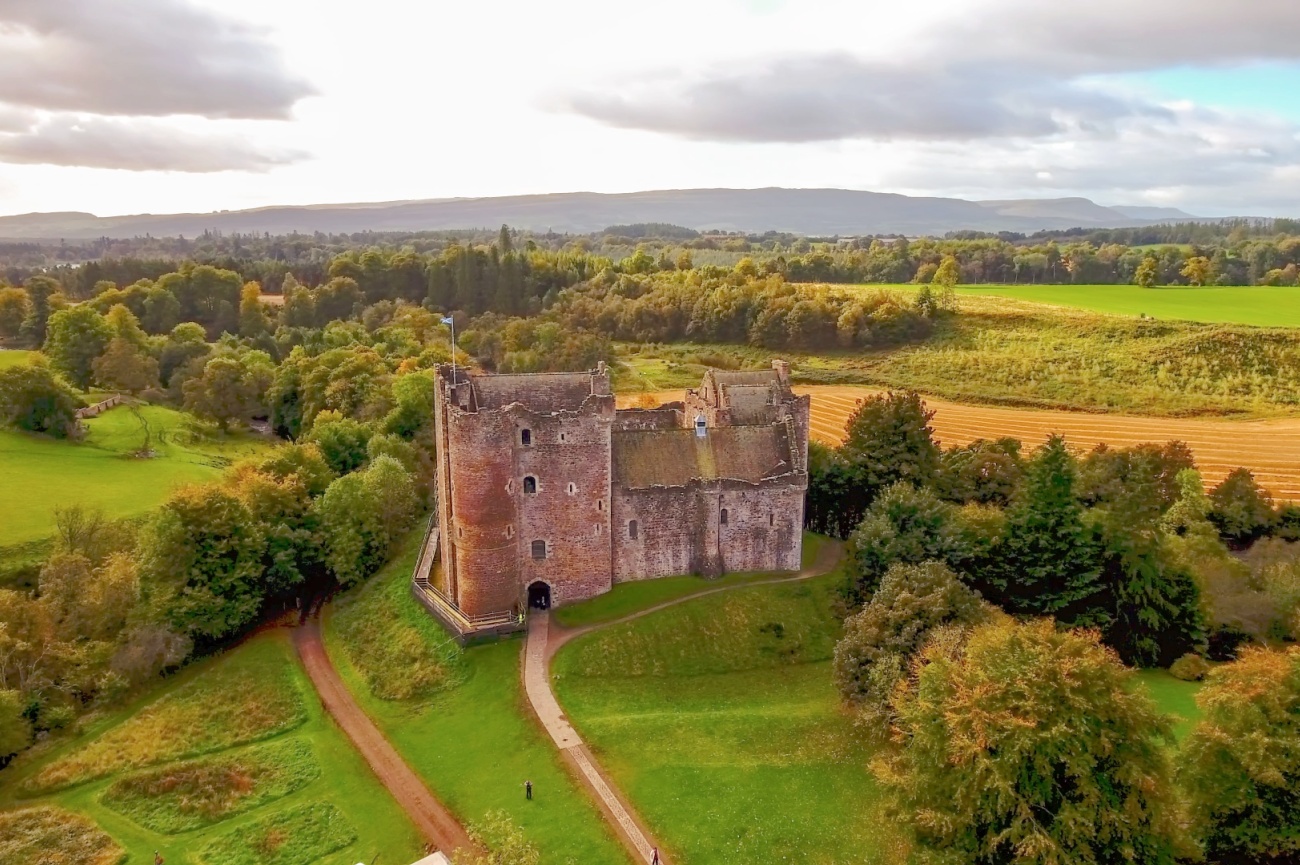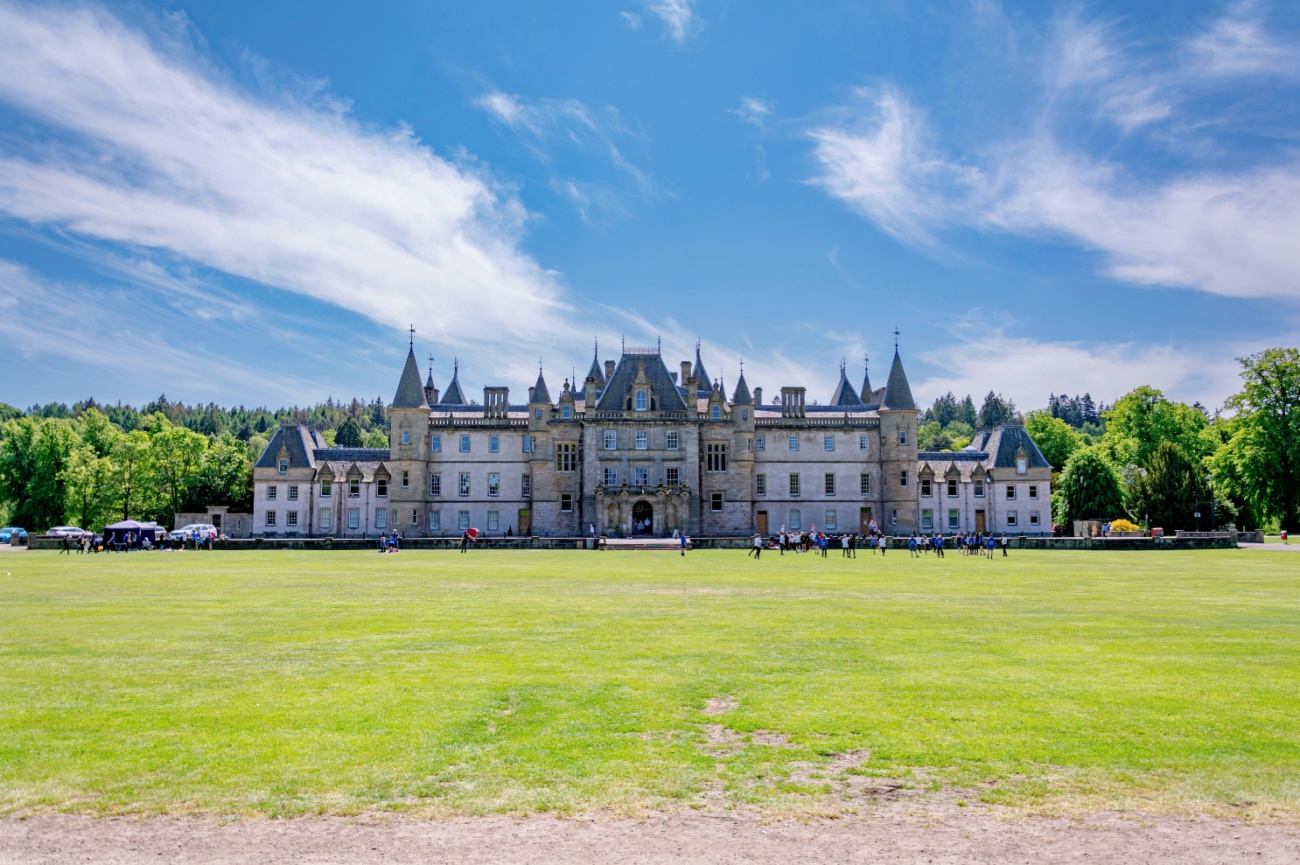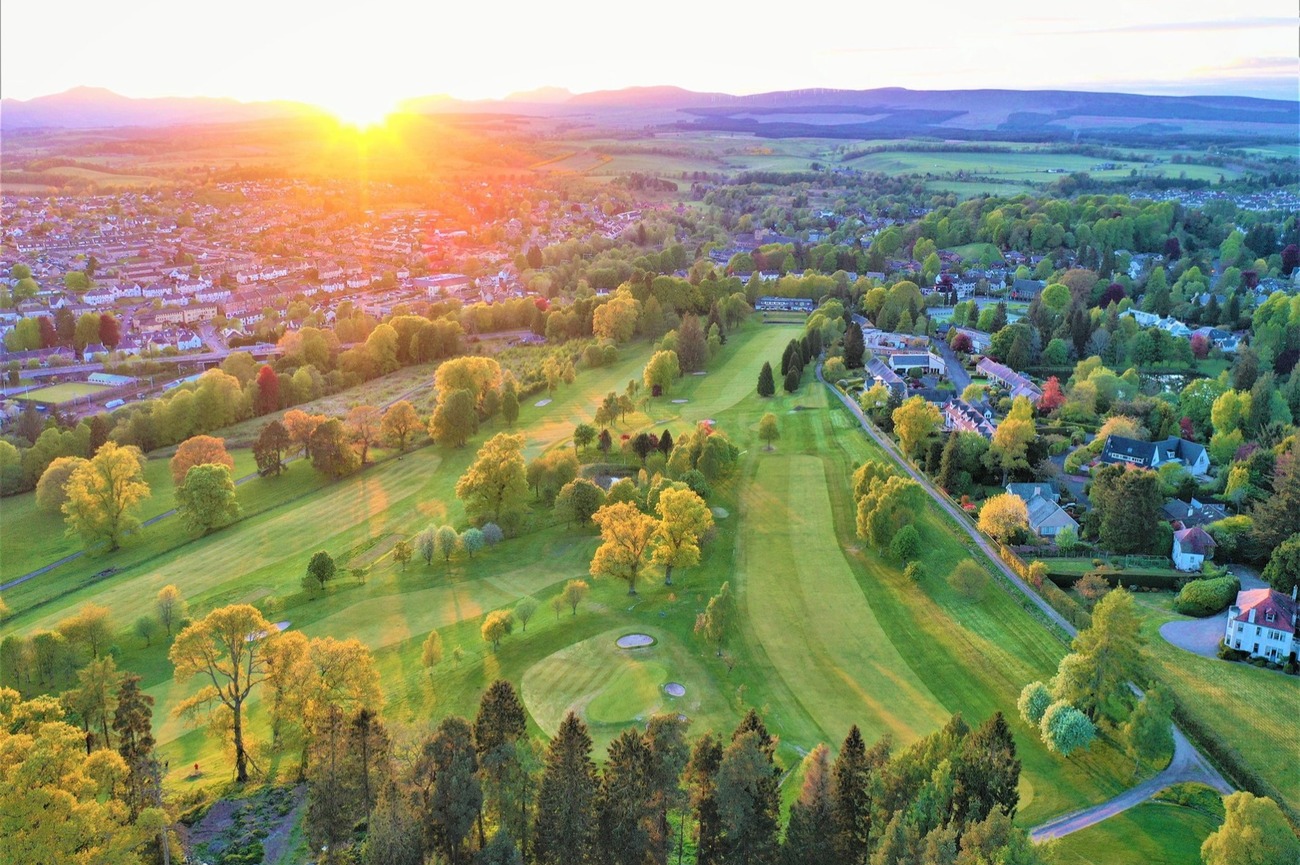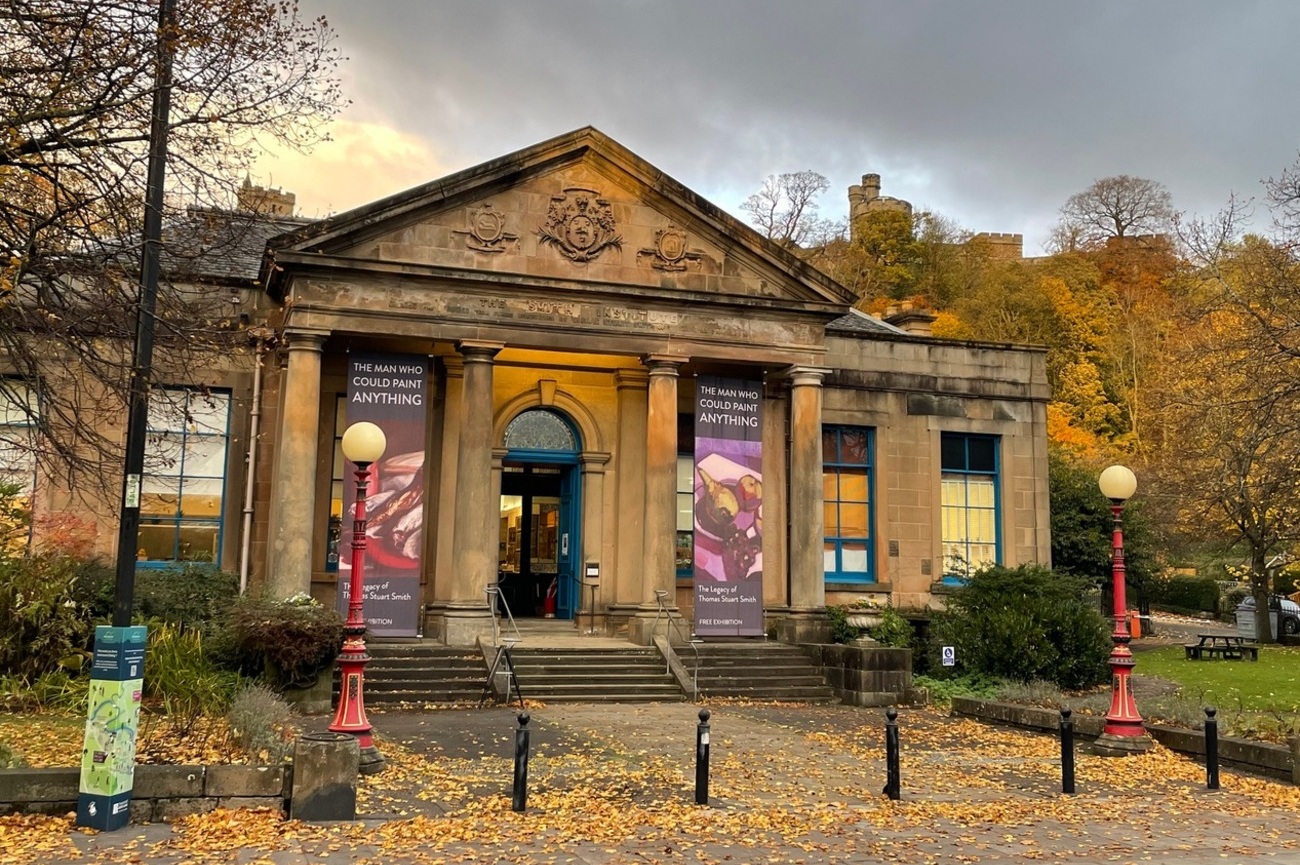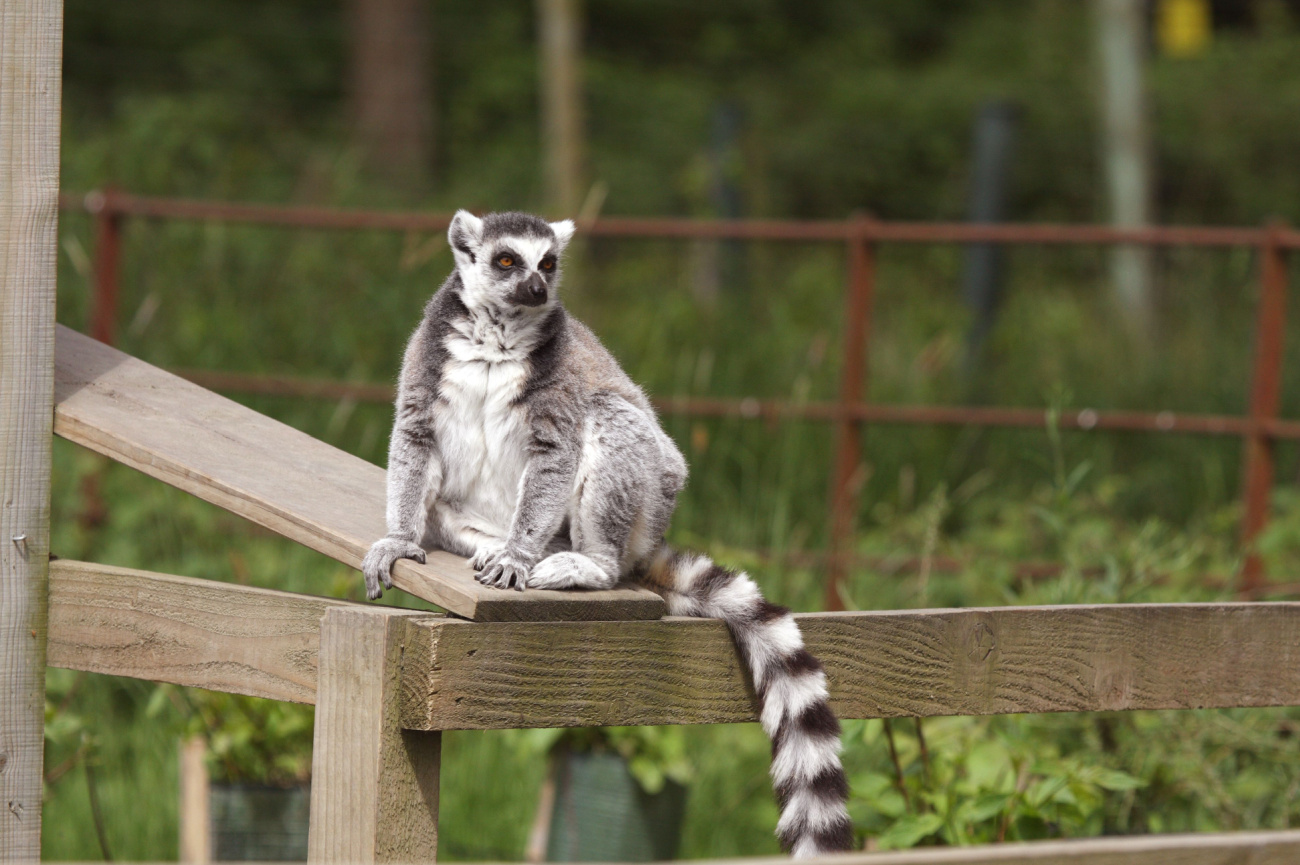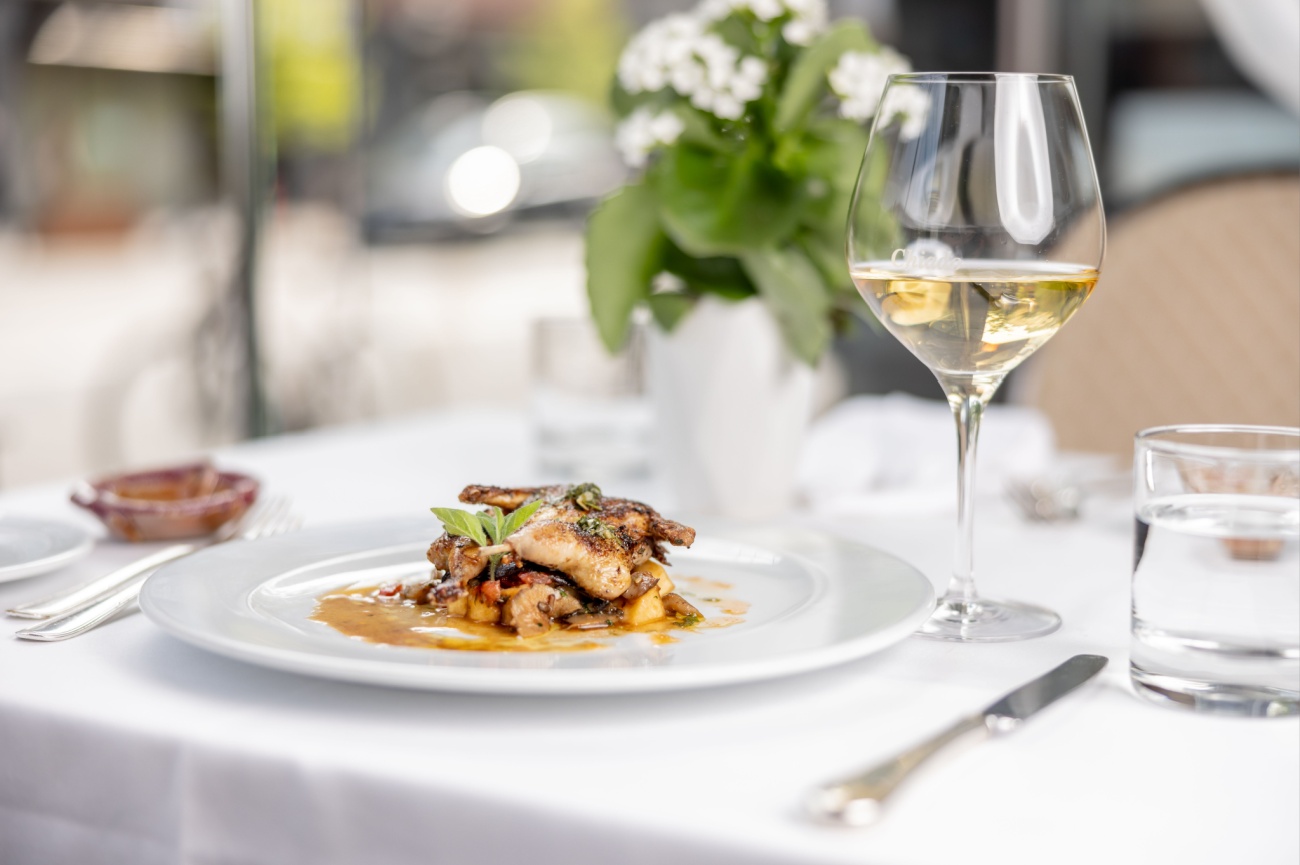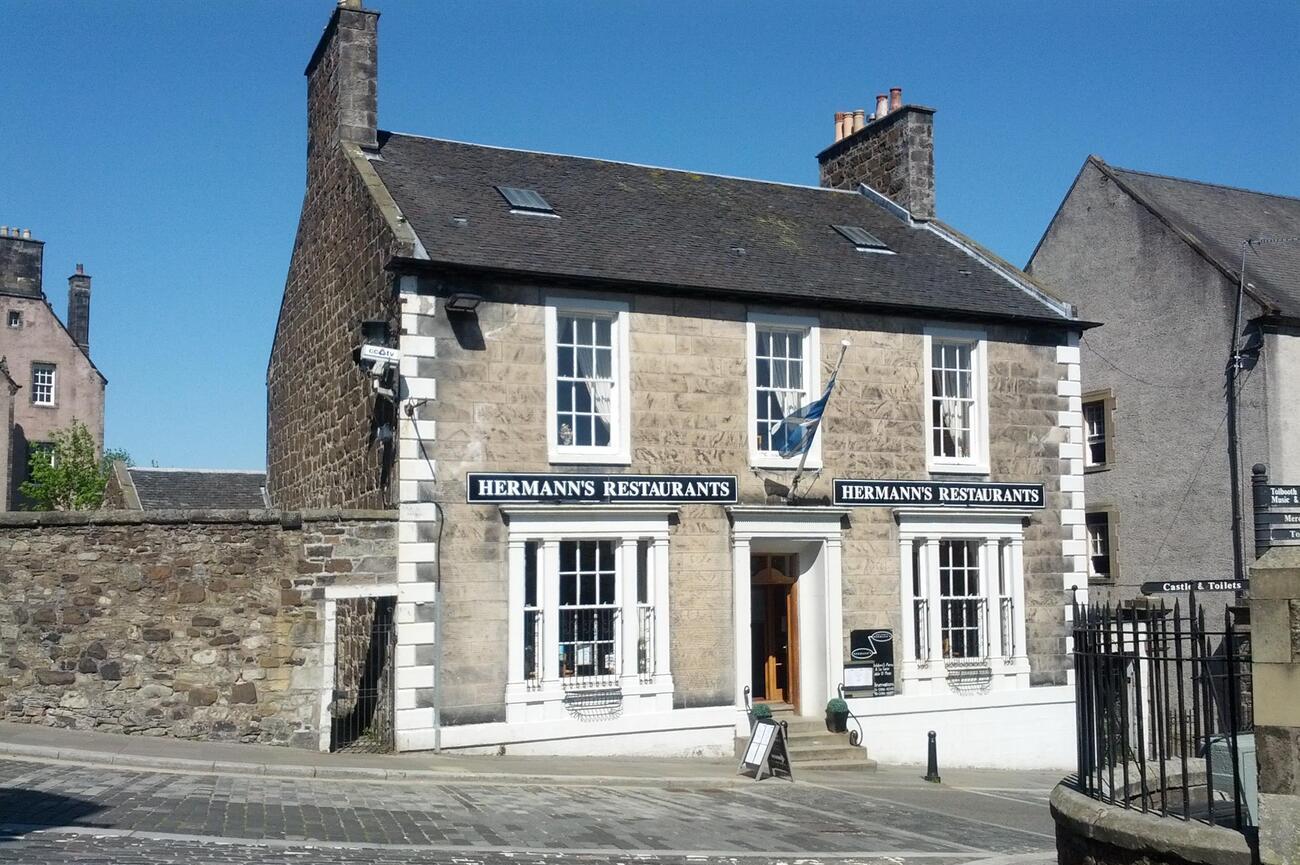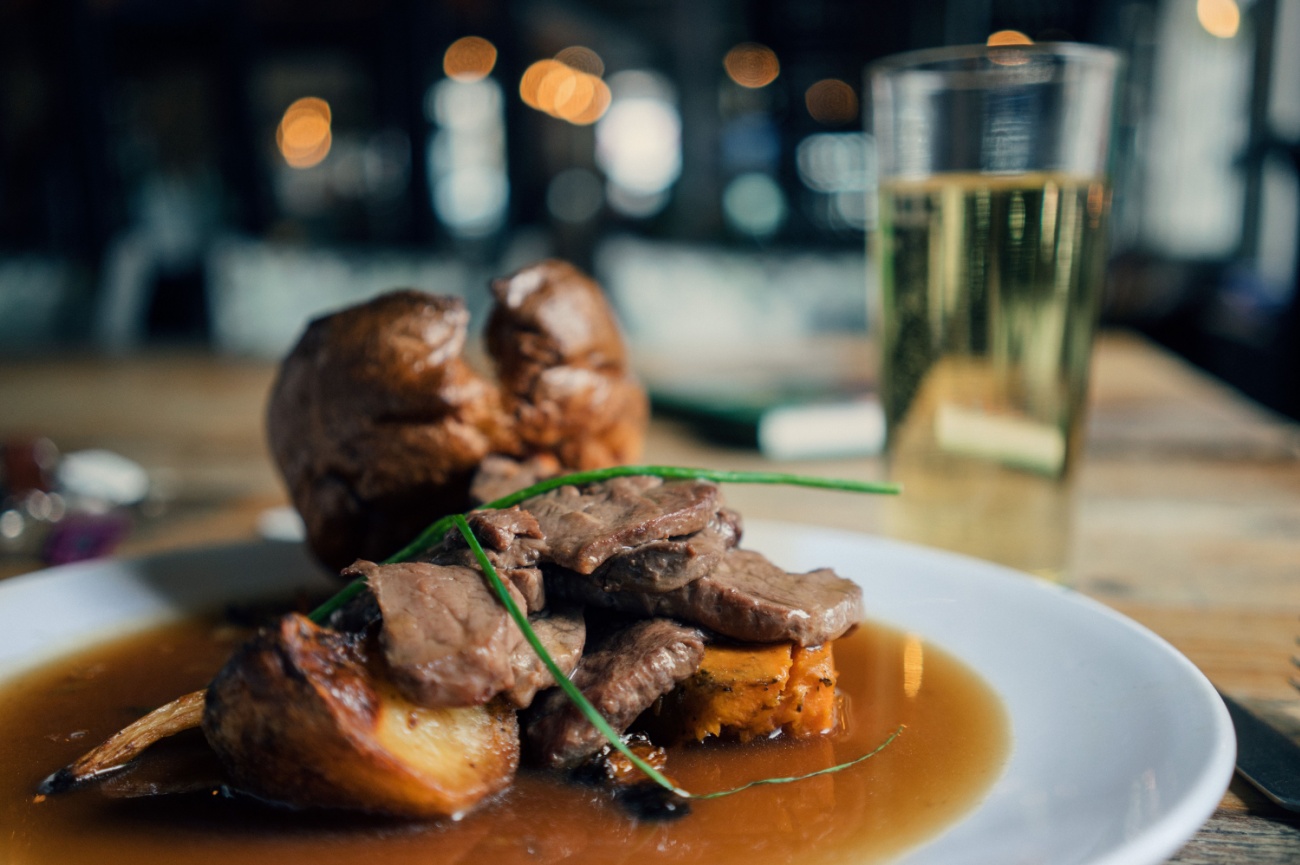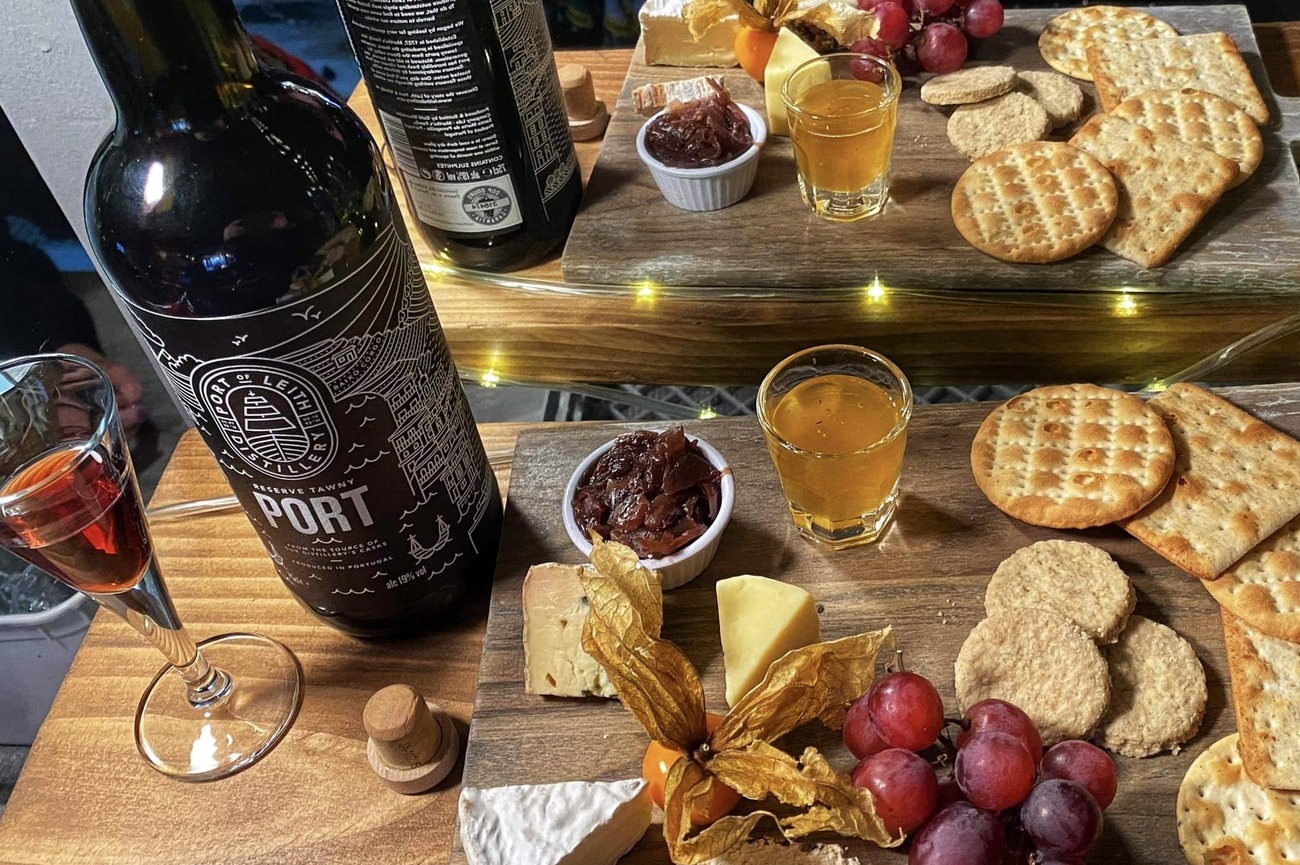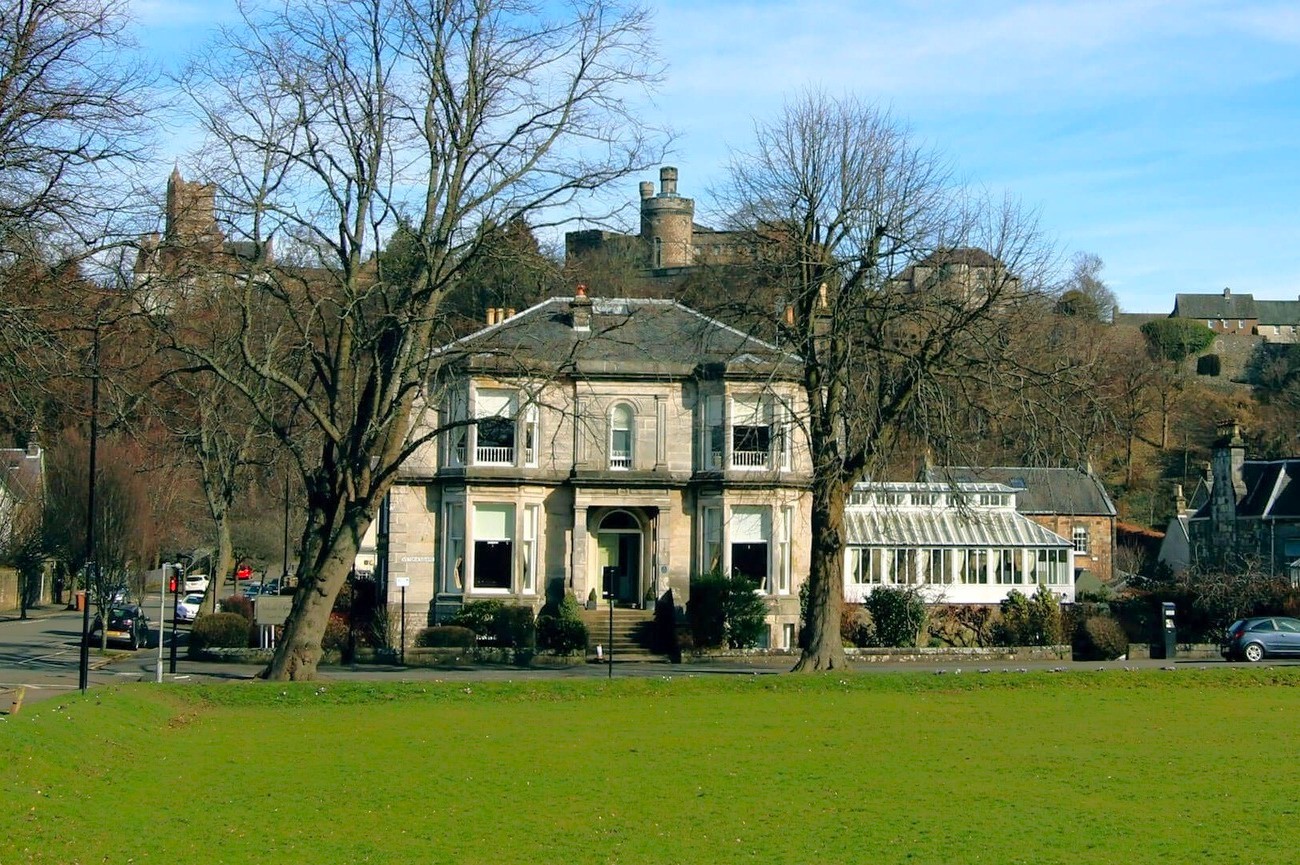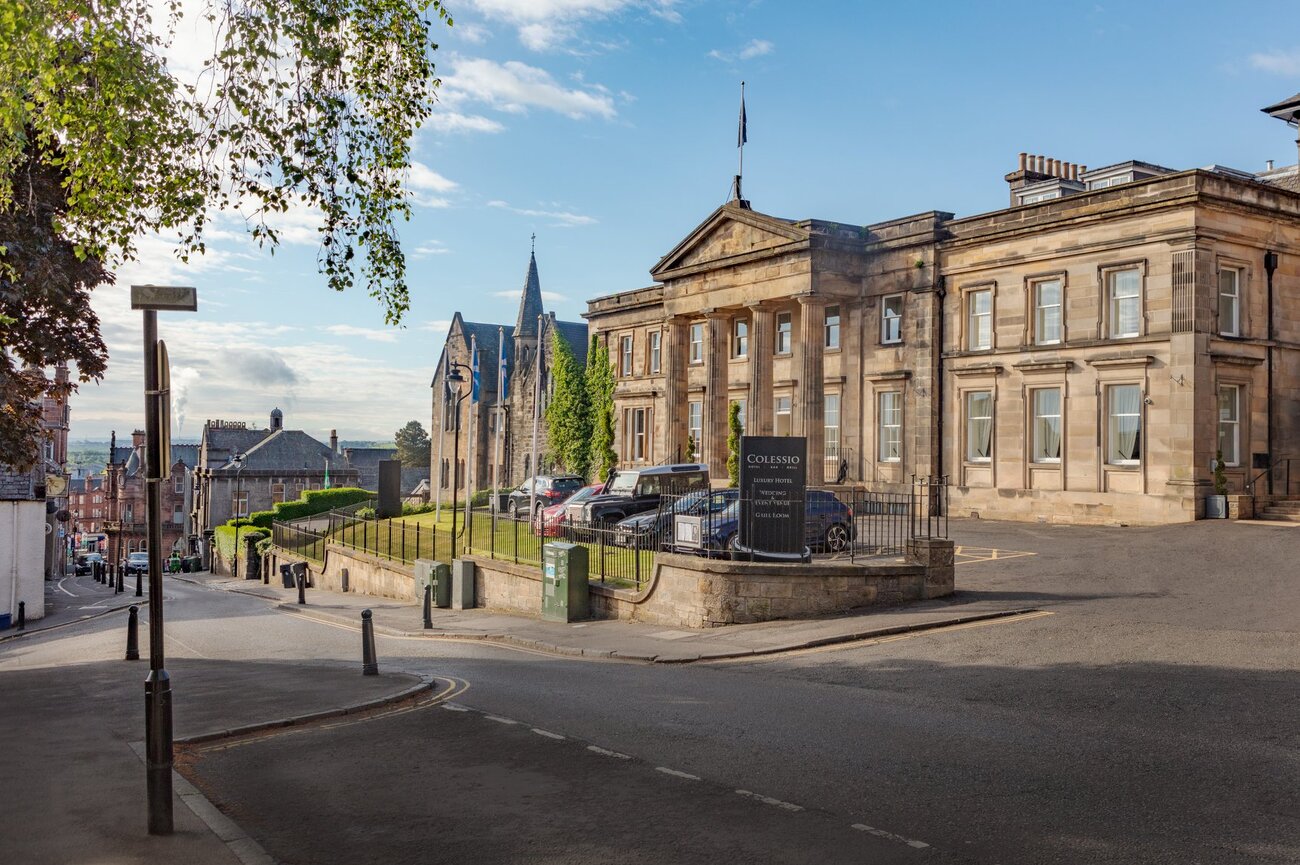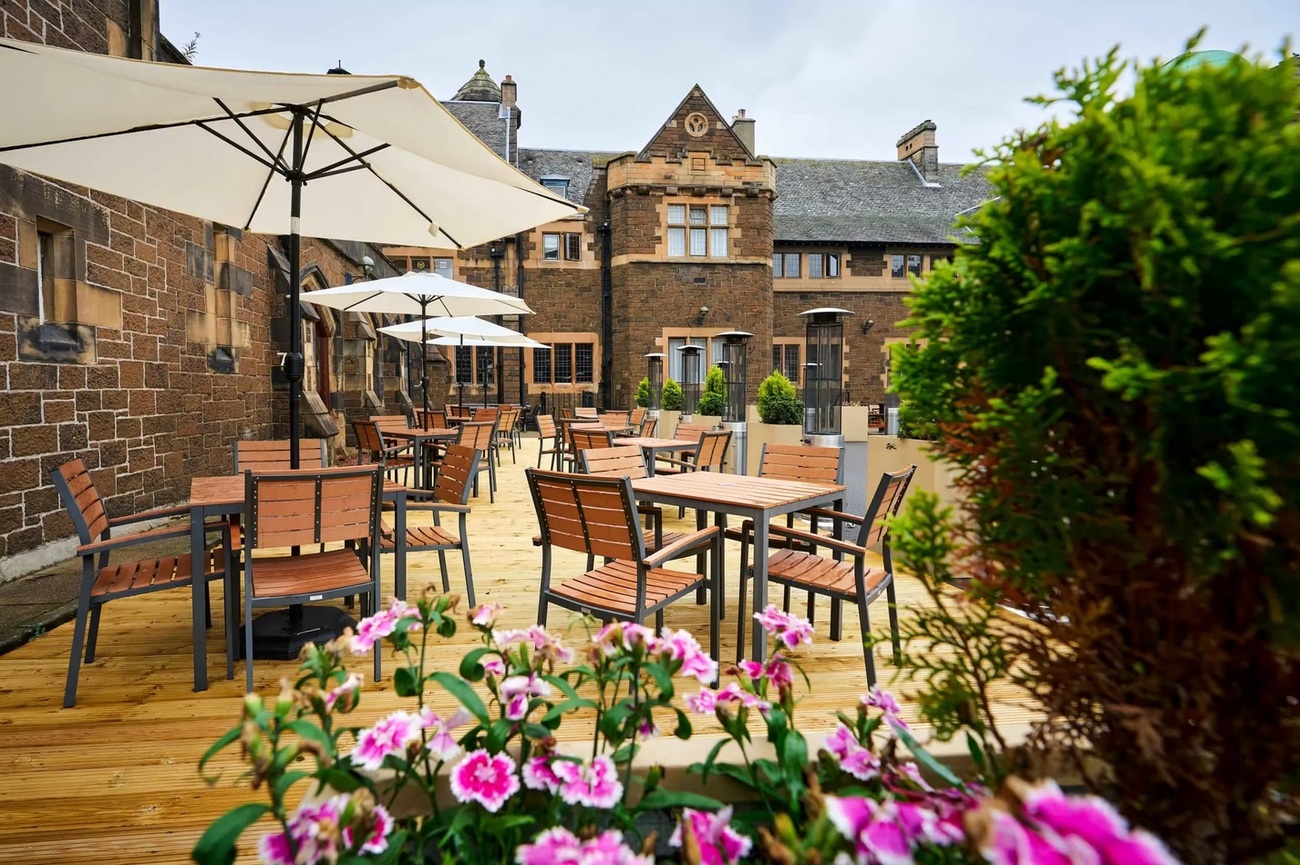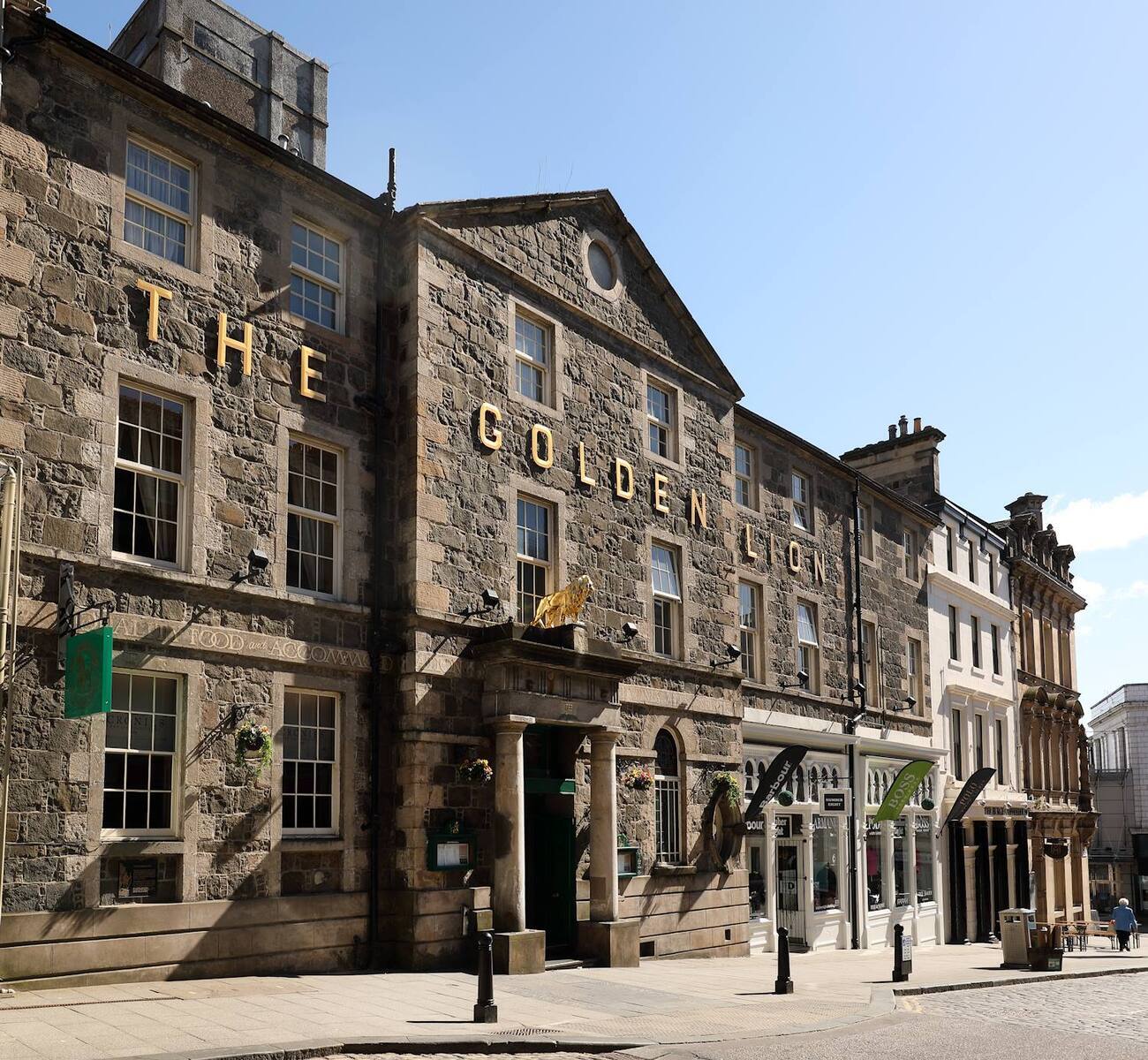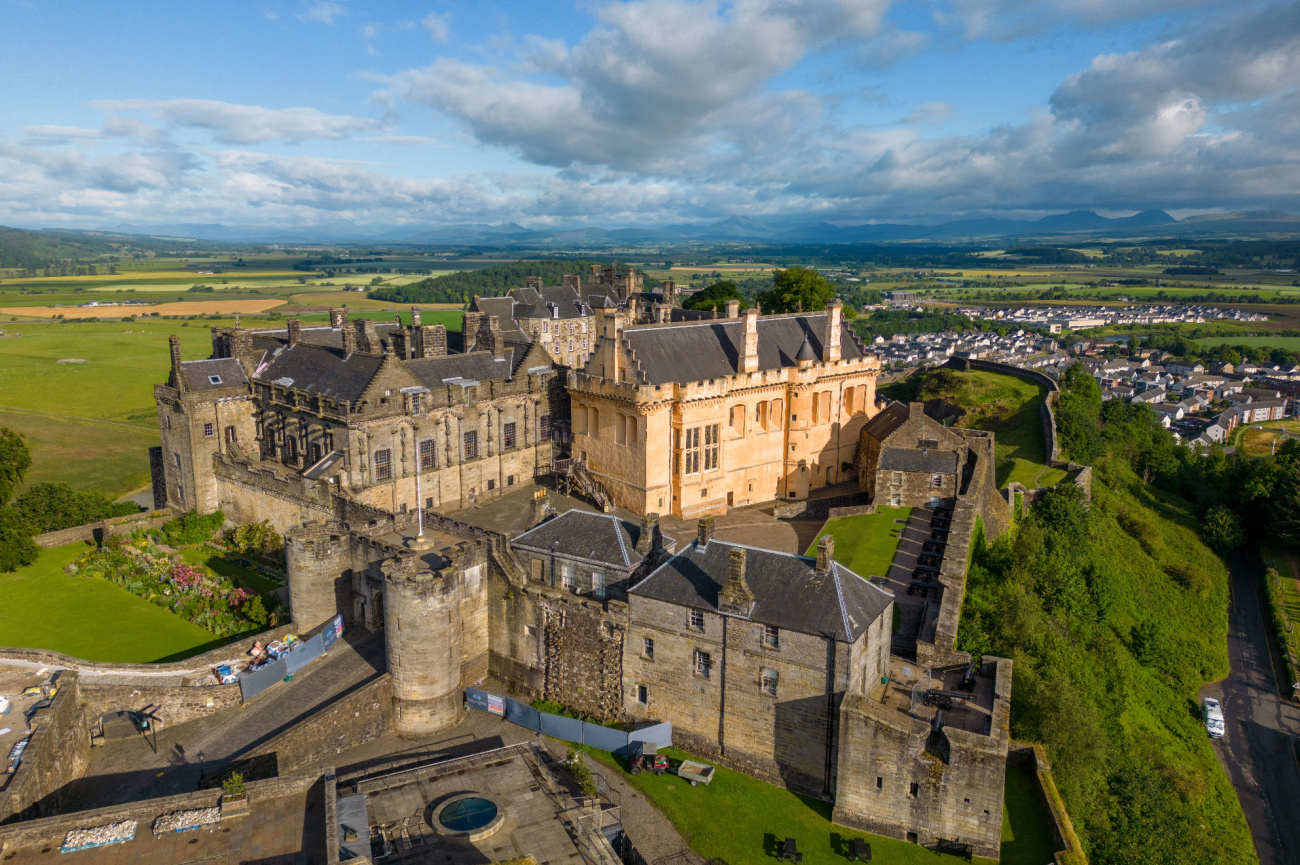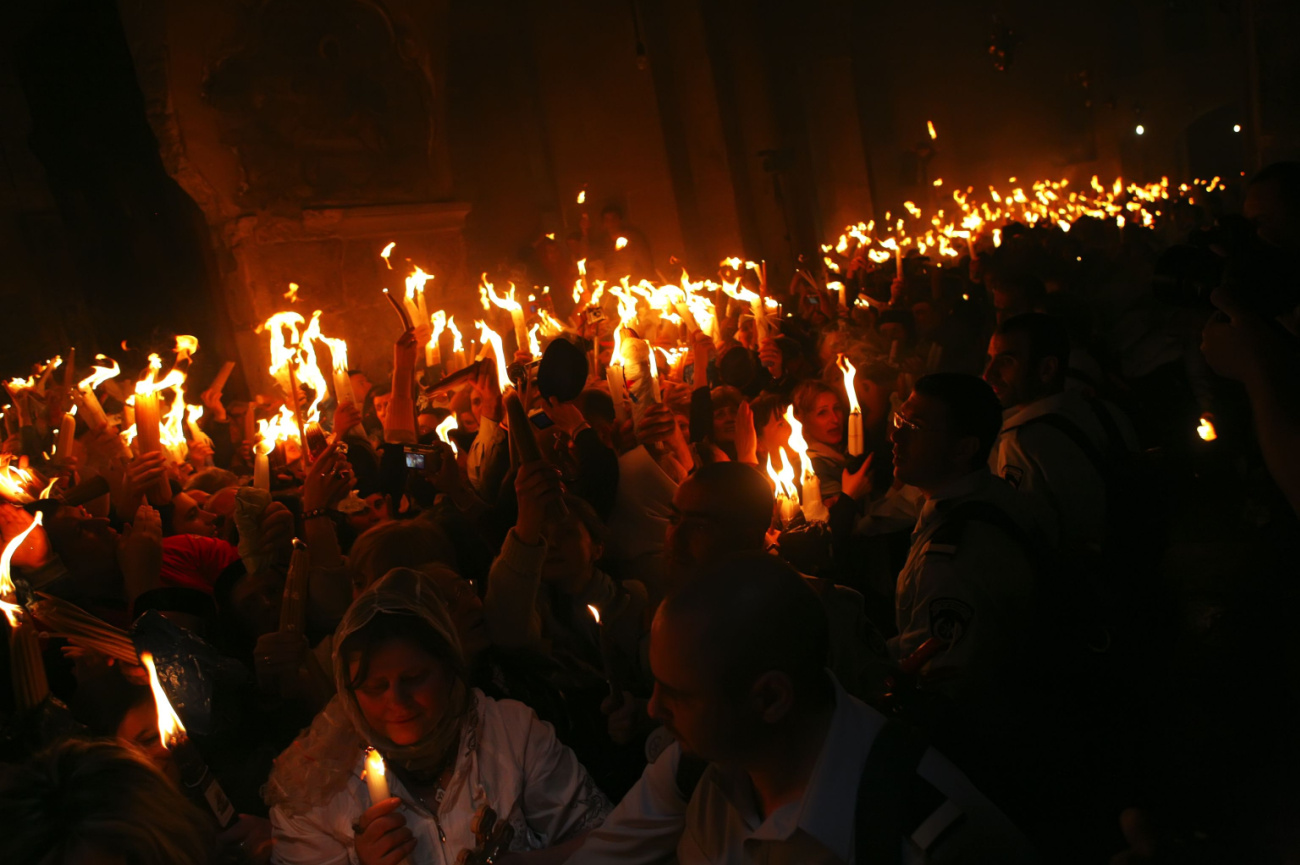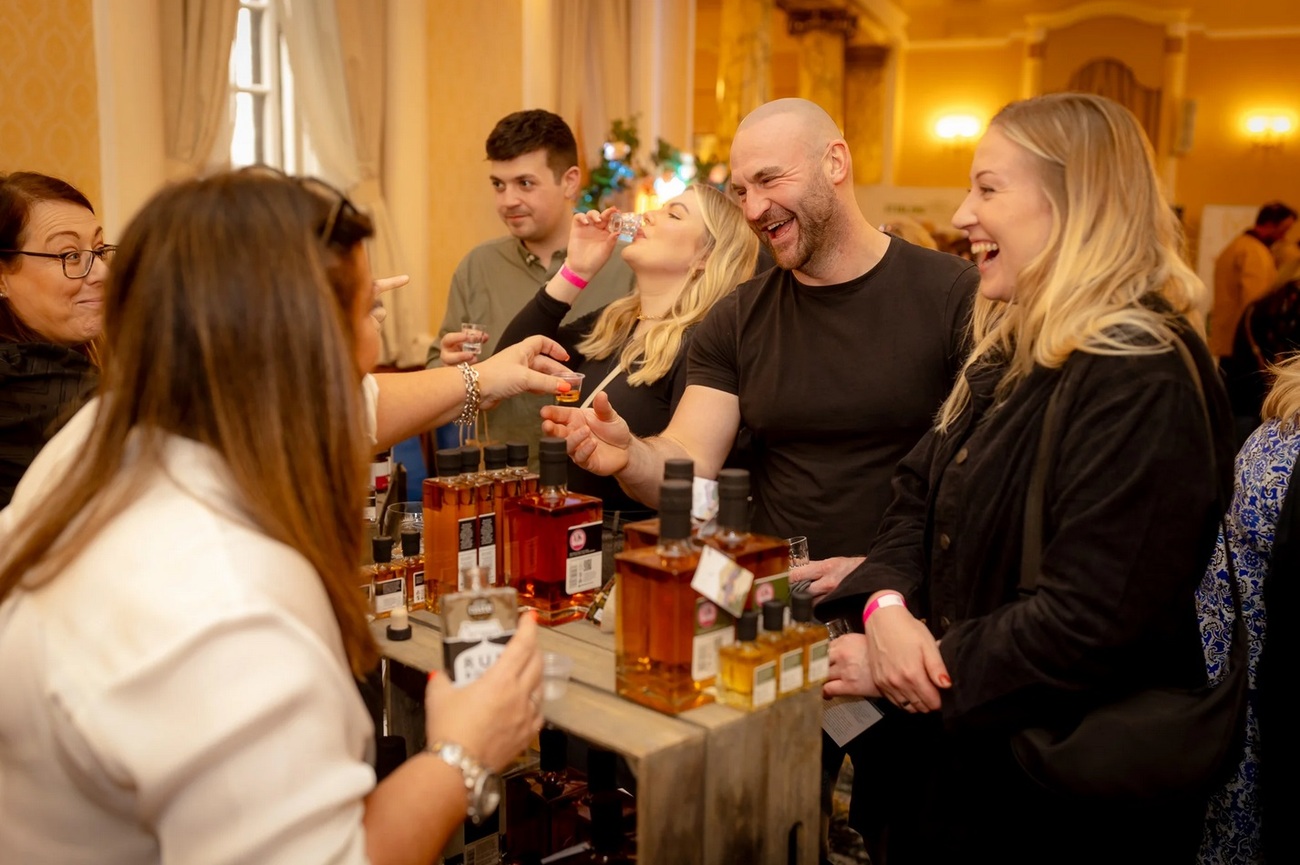Things to Do in Stirling: 2-Day Itinerary
Steeped in history, the city of Stirling has long been known for its imposing castle and grand gothic monument to William Wallace. On our two-day itinerary, you’ll wander through cobbled streets soaking in the historical atmosphere and visiting Stirling’s most famous attractions. As well as an introduction to the city’s medieval and Victorian buildings, intriguing museums and best viewpoints, you’ll find numerous suggestions for where to stay and eat. If you’re looking to stay longer, we’ve included plenty of ideas for other things to do in the city and day trips.
Day 1

Morning: Stirling Castle
Start your day at the city’s most famous attraction, Stirling Castle. This strategically located magnificent fortress sits imposingly on Castle Hill. Enjoy the impressive views over the city from the ramparts, marvel at the great hall and enjoy the interactive exhibits in the vaults. The castle’s connection to Scottish history is irrefutable and a visit here is a great opportunity to learn about the battles, monarchs and defining moments of Scotland’s history, including Mary Queen of Scots, the Wars of Scottish Independence and the attempted siege by Bonnie Prince Charlie.
Argyll and Sutherland Highlanders Regimental Museum
During your trip to Stirling Castle, don’t miss the opportunity to visit the Argyll and Sutherland Highlanders Regimental Museum. The museum introduces visitors to the stories of this famous regiment and presents Scottish culture and heritage from a unique perspective through a combination of personal anecdotes, interesting objects and informative displays. There are also family-focused trails within the museum to encourage younger visitors to learn about the regiment too.
Old Town Cemetery
Continue your exploration of Scotland’s history with a visit to the Old Town Cemetery. Here, you’ll find monuments and gravestones dedicated to a huge range of different people, from an engineer aboard the Titanic to soldiers and philanthropists. Discover the history behind the Star Pyramid, the Martyrs Monument and Ladies Rock, as well as tales of witches and grave robbing. The oldest resident to call the Old Town Cemetery their final resting place is believed to be a Dominican Friar who died over 700 years ago. There are also impressive views over to Stirling Castle.
Church of the Holy Rude
From the cemetery, make your way to the Church of the Holy Rude. This 15th century church is the second oldest building in the city and has witnessed the coronation of James VI, preaching by John Knox and the political and religious division of the 17th century. Its name comes from the Holy Rood, a relic of the cross of Jesus’s crucifixion. Don’t miss the impressive stained-glass windows.
Afternoon: Stirling Old Town Jail
Travel back to the Victorian period with an immersive performance tour at the Old Town Jail. Initially built as a Reformed Prison in 1847, the building has undergone many changes over the years before becoming one of the city’s most popular attractions. As part of your visit, you’ll see original prisoner carvings in the cells and impressive views over the city and beyond from the observation tower.
Stirling Smith Art Gallery and Museum
Home to over 40,000 objects and artworks, the Stirling Smith Art Gallery and Museum offers visitors the chance to learn all about the history of Stirling through the numerous displays including the world’s oldest football. The family-friendly exhibitions include opportunities for dressing up and brass rubbing. There is also a café and biodiversity garden.
Stirling Old Town
Take some time to wander the cobbled streets of the Old Town. Stop for a coffee or pop into one of the shops selling everything from Christmas decorations to bagpipes. For those looking for a spookier experience, there are ghost walks which explore some of the city’s myths and legends
.
The King’s and Queen’s Knots
Finish up your first day exploring Stirling with a visit to the King’s and Queen’s Knots. These are geometric earthworks which sit at the foot of Stirling Castle in what was the King’s Park. In times gone by the vast area occupied by King’s Park would have been used by the monarchs for leisure activities like jousting and hunting, meanwhile the King’s and Queen’s Knots were part of the formal gardens and were designed to be admired from above as much as explored below. The octagonal King’s Knot, often referred to locally as the cup-and-saucer, along with its somewhat flatter counterpart the Queen’s Knot is a great spot for a stroll admiring the castle before heading back into town for dinner.
Day 1 -
Stirling
Tour Map
Day 2

Morning: Wallace Monument
One of Stirling’s most famous attractions, the Wallace Monument stands proudly on the Abbey Craig hillside. At 220 foot tall, it is an imposing 19th century dedication to the Scottish hero William Wallace and his defeat of English troops at the Battle of Stirling Bridge in 1297. You’ll need to head slightly out of the city centre to reach the monument and then climb the 246 steps inside but the impressive views over the city are well worth the effort. Enlightening exhibitions about Wallace can also be found throughout.
Stirling Old Bridge
Make your way back to the town centre by crossing the pedestrianised Stirling Old Bridge. Although not the actual bridge involved in the famous Battle of Stirling Bridge during the First War of Scottish Independence, the existing stone structure crossing the River Forth still likely dates back to the 15th century. Other historical links include its use during the Jacobite Rising of 1745 to slow down the Jacobite forces. Be sure to admire the great views of the Wallace Monument and Stirling Castle.
Beheading Stone
From the bridge, make your way up to Mote Hill and the gruesomely named Beheading Stone. Once the site of a Pictish Fort, it was in the 15th century that Mote Hill was chosen as the spot to execute those found guilty of treason. This historic stone sits on a plinth surrounded by a cage adjacent to two cannons with impressive panoramic views over to Stirling and the Wallace Monument in a unique combination of macabre and breathtaking.
Gowan Hill Heritage Trail
The Beheading Stone is part of the Gowan Hill Heritage Trail. Take a wander along the paved and unpaved paths that make up the trail and discover more about the city’s history from the interpretation boards before heading back towards the Old Bridge to continue your exploration of the city.
Afternoon: Lovers Walk
Charmingly named Lovers Walk is a short section of road which hugs the riverbank and offers great views of the Wallace Monument. Take a stroll along the River Forth as you make your way towards the lesser-known site of Cambuskenneth Abbey.
Cambuskenneth Abbey
Continue to enjoy the riverside views as you stroll from Lovers Walk to Riverside Drive and over the Cambuskenneth Bridge to what remains of the 12th century Augustinian monastery beyond. As the burial place of King James III and the location of Robert the Bruce’s parliaments in both 1314 and 1326, the abbey has strong links to Scottish history. It was abandoned during the Scottish Reformation meaning little of the original building except for the bell tower remains.
Battle of Bannockburn Visitor Centre
Complete your journey exploring Scottish history in Stirling with a visit to the award-winning Battle of Bannockburn Visitor Centre. The Battle of Bannockburn took place in 1314 between the armies of Robert the Bruce and Edward II of England, with the King of Scots coming out victorious. Discover the story of the battle through the immersive digital recreation before exploring the memorial park outside. The immersive nature of the experience means it may not be suitable for younger children and make sure to book a time slot in advance.
Day 2 -
Stirling Tour Map
Other things to see in Stirling
- Blair Drummond Safari and Adventure Park: This family friendly day out features a safari drive-through as well as fairground rides and the chance to see more than 300 animals. There’s also a thrilling dinosaur exhibit and a large children’s play area.
- Dunblane Cathedral: If you’re looking to continue your exploration of historical buildings in the area, Dunblane Cathedral boasts a sandstone tower that dates back to the 12th century. Be sure to check out the nave, the stained-glass windows and the fascinating medieval architecture.
- Bridge of Allan: This charming town just outside Stirling is popular for a spot of retail therapy and relaxation with its independently run shops and restaurants. Bridge of Allan is also a great starting point for a number of walking routes, whether you’re looking to head out to the Ochil Hills or for a gentler stroll through Kippenrait Glen to Dunblane.
- Deanston and Doune: The historic villages of Deanston and Doune sit side by side with the River Teith in between. Discover the 14th century Doune Castle, famous for its appearances in Outlander, Game of Thrones and Monty Python and the Holy Grail as well as its impressive great hall and gatehouse. For whisky lovers, there’s the Deanston Distillery, while for those looking to explore the countryside there are various walking routes to choose from.
- Whisky Distillery Tours: Take the opportunity to taste a dram of Scotland’s traditional tipple at one of Stirling’s distilleries. In the city centre, there’s Stirling Distillery, which also produces nettle-based gin. Alternatively head to Deanston Distillery, which is located in a former cotton mill on the banks of the River Teith. Slightly further afield you’ll find Tullibardine Distillery, which was once a brewery visited by King James IV of Scotland back in 1488.
- Cowane's Hospital was founded in 1637 by the bequest of the wealthy merchant John Cowane, who wanted to establish an almshouse for retired members of Stirling's merchant guild. This fine building is centrally located in Stirling, just below Stirling Castle and opposite the Church of the Holy Rude where King James VI was crowned, exemplifying 17th-century burgh architecture.
- Argyll's Lodging: One of the most important remaining buildings from the Renaissance to be found in Scotland is the 17th-century townhouse Argyll's Lodging in Stirling. Originally built for a rich burgess, it received a number of sizeable extensions and alterations over the years. Known for its stunning features like a high dining room, a grand drawing room, and intricate carvings.
Day Trips from Stirling
- Callander: To the northwest of Stirling, you’ll find the small town of Callander. Set on the banks of the River Teith where the Highlands meet the Lowlands, the town has numerous walking trails, souvenir shops and cafes. You can also take a boat cruise on nearby Loch Katrine or take a trip through nostalgia at the Hamilton Toy Museum.
- Edinburgh: Scotland’s capital city is easily accessible by train or car from Stirling. The city boasts fascinating architecture, from the medieval cobbles of the Royal Mile to the Georgian grandeur of Princes Street, not forgetting of course impressive Edinburgh Castle. Packed with dramatic viewpoints including Calton Hill and Arthur’s Seat, Edinburgh boasts a huge variety of attractions along with a thriving foodie scene.
- Glasgow: Pay a visit to Scotland’s largest city and you’ll discover an impressive variety of museums. Whether you’re looking for world-famous paintings at the Kelvingrove Art Gallery and Museum or to understand Glasgow’s industrial heritage at the Riverside Museum, there really is something for everyone. The city is also home to the vibrant City Centre Mural Trail, made up of more than 25 colourful street murals. If that wasn’t enough, Glasgow is famous for its lively music scene and impressive range of shops.
- Falkirk: Enjoy a day trip to Falkirk filled with innovative engineering and impressive sculptures. The Falkirk Wheel is the only rotating boat lift in the world, transporting boats from the Forth and Clyde Canal to the Union Canal. Meanwhile the Clydesdale workhorses were the inspiration for Andy Scott’s iconic Kelpies sculptures.
- Perth: Head to Scotland’s first capital for a day of cultural discovery and elegant charm. There are top-quality museums and galleries, picturesque castles and beautiful gardens with the smaller size of the city making it perfect for a day trip. Perth sits on the banks of the River Tay and boasts beautiful Georgian architecture as well as the glorious Scone Palace.
- Loch Lomond and The Trossachs National Park is the first National Park in Scotland, established in 2002. Its landscape varies greatly: craggy hills, wooded valleys, and inviting waters. The park is situated on a fault line that separates the Highlands from the Lowlands. You could also take a boat trip on the loch and admire the bulk of Ben Lomond (Scotland's southernmost Munro) alongside the jagged peaks of the Arrochar Alps, or even visit one of the 30 islands within Loch Lomond.
- Dollar Glen: This woodland east of Stirling is surrounded by the Ochil Hills and offers rare wildlife habitats, including lichens and ferns, and is home to various bird species. Walk along the banks of the Burn of Sorrow and the Burn of Care, or take a walk to the Castle Campbell ruins, the former 15th-century stronghold of the Earl of Argyll. It is perched high above the gorges and steep, wooded slopes, so you may find the walk challenging.
- Drummond Castle Gardens: Dating back to the 17th Century, Drummond Castle Gardens, located in Perthshire near Crieff, is one of the most important and impressive formal gardens in Europe and Scotland. Replanted in the 1950s, the gardens retain ancient yew hedges and a beech tree planted by Queen Victoria, commemorating her visit in 1842. The gardens have been featured in films, TV programs, and adverts. These include a United Artist feature film, Rob Roy, and also the Starz Outlander series. Visitors are welcome to come and see the gardens, although the castle itself remains closed to visitors.
- Doune Castle: In its heyday, Doune Castle was a strategic fortress, but today, it's most famous as a film location in a number of popular productions. As well as being heavily featured in Monty Python and the Holy Grail, Doune Castle was also used for the castle known as Winterfell in the pilot of the award winning TV series Game of Thrones as well as Castle Leoch in Outlander.
- Callendar House, a 14th-century historic building in Falkirk, Scotland, was reshaped and extended in the 19th century, incorporating elements of French Renaissance and Scottish baronial architecture. Stroll through the beautiful parklands or drop into the tearoom for a decadent Afternoon Tea. Explore the house, exhibition, Georgian Kitchen, or the playpark. On your way out, be sure not to miss the gift shop.
Best Golf Courses in Stirling
Golf has a long history in Stirling with the area that now belongs to Stirling Golf Club having been used for golf during King James IV’s reign. Stirling Golf Club is the closest to the city centre, based in the former King’s Park with views up to the imposing Stirling Castle above. There are also plenty of alternative options within an accessible distance including Callander Golf Club, Dunblane New Golf Club and Bridge of Allan Golf Club. Located just 20 miles from Stirling is the Gleneagles Golf Course, famous for its luxury and championship courses.
Things to Do with Kids in Stirling
Stirling’s attractions are highly family friendly with interactive activities in the castle vaults and Stirling Smith Art Gallery and Museum. The city also boasts immersive experiences with the theatrical tour at the Old Town Jail and the digital recreation at the Battle of Bannockburn Visitor Centre. Do note that both of these are better suited for older children. The Blair Drummond Safari Park with its drive through experiences and variety of animals is also very popular with families. For those needing to burn off some energy, there are several parks in and around Stirling and of course the 246 steps of the Wallace Monument. Families also tend to enjoy the various walking tours available (including the ghost walking tours for a spookier option) as a great way to learn about the city’s history and culture.
Where to Eat in Stirling
- The Orangery: Set in the luxurious Victoria Square hotel, this fine dining restaurant located a short distance from the castle boasts a seasonal menu showcasing Scottish produce. You can also book in for afternoon tea.
- Hermann’s: Here you’ll find the less common combination of Austrian dishes created from Scottish produce. Schnitzel and strudel are common features on the menu at this cosy spot which sits almost opposite the Church of the Holy Rude.
- The Birds and the Bees: Serving a varied menu featuring locally sourced, seasonal ingredients and an impressive selection of real ales and wine, the Birds and the Bees is a popular spot for visitors and locals alike. The converted farm steading is in the northern part of the city and offers a relaxed atmosphere and outdoor seating for warmer days
- Brea: This relaxed, award-winning restaurant focuses on delivering exceptional dishes made from locally sourced produce. The cosy atmosphere, delicious food and extensive drinks menu make this one of Stirling’s most popular eateries and advanced booking is advised.
Where to Stay in Stirling
- Victoria Square (5 stars): With elegant rooms inspired by the Victorian period and an award-winning fine dining restaurant, Victoria Square is ideal if you’re looking for a luxury stay in Stirling’s historic city centre. The attentive service adds to the warm and welcoming atmosphere and the location is just a few minutes’ walk from the Stirling Smith Art Gallery and Museum, the King’s Knot or Stirling Golf Club.
- Hotel Colessio (5 stars): This impressive Victorian building boasts 40 comfortable and well-equipped rooms and suites. In contrast to its historic exterior, Hotel Colessio features a sleek, modern design throughout and is ideally situated for visiting the city’s top attractions or a spot of shopping in the Old Town.
- Stirling Highland Hotel (4 stars): Set in a city centre location a short walk from the castle and the Church of the Holy Rude, the Stirling Highland Hotel has an on-site spa, a stylish restaurant and a rooftop observatory. Once a Victorian high school, the hotel features 96 comfortable rooms decorated with a Scottish theme.
- Golden Lion Hotel (3 stars): This family-run hotel is a historic establishment which has been welcoming guests for over 200 years, among them the famous Scottish poet Robert Burns in 1787. Popular for its friendly atmosphere, central location and comfortable ensuite rooms, the Golden Lion Hotel also boasts a bar and restaurant as well as onsite parking.
Best Time to Visit Stirling
Stirling is a great city to visit all year round with less harsh winters than much of the rest of the country. However, as with any travel in Scotland, the weather can be somewhat unpredictable. The warmest and driest months to visit are usually June to August, although this is also the busiest and most expensive time to travel to the city. If you are planning to visit during the summer, be sure to book accommodation, restaurants and attraction tickets well in advance. Taking into consideration weather conditions, crowds and prices, the best time to visit Stirling is late spring and early autumn.
Stirling Festivals
- Bloody Scotland: This annual literary festival celebrates and promotes international crime fiction. It’s been taking place in Stirling since 2012 and features talks from top writers in the field.
- Stirling SpiritFest: Discover the carefully crafted produce of Scotland’s distilleries at this ten-day event, which incorporates the Stirling Gin Festival and the Stirling Whisky Festival. Other activities include gin masterclasses, cocktail making and expert talks.
- Stirling Science Festival: Each October the city becomes the place to learn about science and innovation. With a family-friendly focus, there are live shows, exhibitions and workshops at various locations across Stirling.
- Callander Jazz & Blues Festival: Set in the town of Callander, about half an hour’s drive from Stirling, the Callander Jazz and Blues Festival started in 2006. Enjoy the vibrant atmosphere during this weekend of live music in rural Scotland.
Our offices:
